#National Aviation History Month
Explore tagged Tumblr posts
Text
Skyward Bound: The Willa Beatrice Brown Story ✈
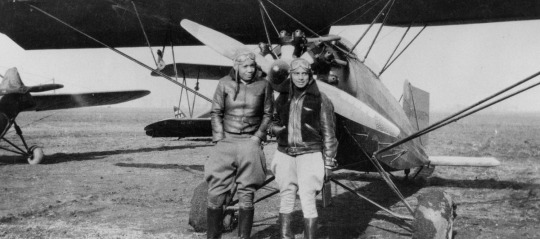
Celebrating Black History Month, we honor Willa Beatrice Brown, a trailblazer in aviation and civil rights activism. Willa Brown, born in 1906 in Glasgow, Kentucky, shattered racial and gender barriers in the skies and became the first African American woman to earn a commercial pilot’s license in the United States. Her unwavering dedication to integrating aviation programs and empowering future pilots through education and advocacy has cemented her as a pivotal figure in American history.
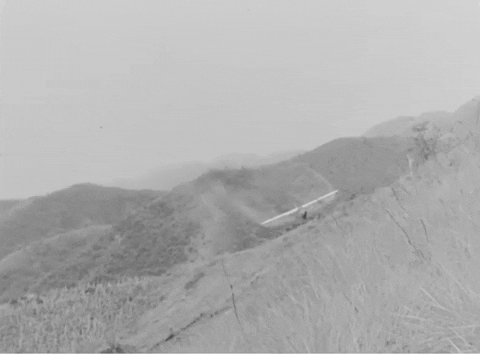
Willa Brown’s journey began with a passion for flying, leading her to earn her pilot’s license in 1938. Together with her husband, Cornelius Coffey, she founded the Coffey School of Aeronautics in Chicago, where they trained African American men and women, providing a foundation for the illustrious Tuskegee Airmen during World War II.
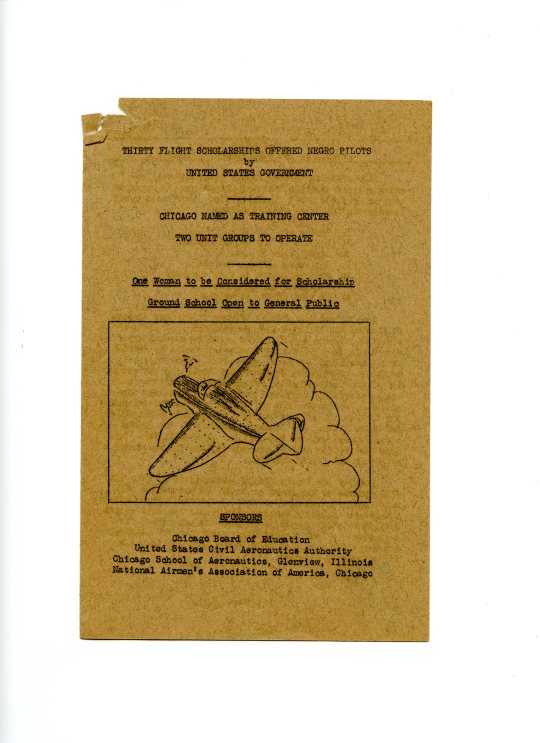
Brown’s advocacy extended to her role as the first African American woman to receive a commission as a lieutenant in the Civil Air Patrol and her political endeavors to integrate the armed forces, culminating in President Harry Truman signing Executive Order 9981 in 1948 to desegregate the military.
For those interested in exploring more about Willa Beatrice Brown’s incredible life and impact, the National Archives holds a treasure trove of resources:
#Black History Month#African American History#National Archives#Women’s History#Willa Beatrice Brown#Willa B. Brown#Aviation#BHM#BlackHistoryMonth#tuskegee airmen
167 notes
·
View notes
Text
I'll be home for Christmas - Bob Floyd x reader

Summary: 1.4k words. Your husband has been deployed for 5 months. The holiday season is in full swing and you’re missing him. This is my entry for @lewmagoo's holiday celebration!
Warnings: language? Pining, angst, fluff & some more fluff
a/n: I wrote most of this in one sitting LAST MONTH. aaaaand then finals season descended upon me like a hoard of rabid locusts. so y'all get this holiday fic now, where it's technically still Christmas in some time zones!

One hundred sixty-seven days.
It’s been 167 days since you last saw your husband.
Rather appropriately, the U.S. military wanted to ensure its service members and their families could celebrate Independence Day.
July 4th at the Floyd household was truly a sight to behold. Penny brought half a dozen pies, Bradley’s family brought Carole’s famous potato casserole, and the rest of the squad brought beer. Lots and lots of beer. Phoenix, however, had more taste than the rest of the boys–as you had repeatedly told them over the years–and brought over your favorite drink to share. Natasha helped you and Bob decorate your humble bungalow early that morning and helped you with food prep throughout the day in anticipation of the 4th of July cookout.
On the surface level, the party you hosted was simply to celebrate the national holiday. It was arguably also a send-off party, given that half the aviators illuminated by fairy lights in your backyard would be shipped off to an undisclosed location less than 24 hours from that moment.
167 days is equivalent to 4,008 hours or 240,480 minutes, according to your recent Google history.
December 19th welcomed you with a cold embrace and increasingly painful longing. In defense of December and the holidays and all the commercialism you found yourself falling willing victim to, you kind of did this to yourself. At no point were you required to watch three and a half hours straight of shitty Hallmark movies over peppermint bark and eggnog. But you did, as was your right and freedom as an American citizen, you mused to yourself against the lip of the lukewarm mug.
Uncle Sam was not your best friend as of late.
Being away from your husband for five and a half months didn’t make for the most pleased military spouse.
You normally counted your blessings when you could. At least during this deployment, you were able to have semi-regular and reliable contact with Bob. Unlike some of his other deployments, the worst being the 10-week stints with no contact or details whatsoever. But now, as you watched the female lead–who looked like every other holiday Hallmark leading lady you’d seen today and yesterday and the day before and the day before that and–who left her impressive job in the city kiss her generically handsome high school sweetheart in front of their small town’s Christmas tree farm, you were not counting 4,008 consecutive hours away from your husband as a blessing.
Bob’s initial deployment orders ensured he’d be home by the beginning of December. Some classified delays that were above your level of security clearance pushed that date back to December 23rd. When Bob had the misfortune of sharing this news with you, he thought the Facetime connection had frozen from how long your jaw remained dropped.
The daily countdown displayed front and center on the fridge was reminiscent of a prisoner’s tally marks.
The second worst part of long deployments like these was the funk you’d fall into. You were a strong independent woman, dammit. But you were also a woman who was deeply in love with her husband. You aren’t ready to accept it yet, but you’re nearly certain this specific deployment has deepened some wrinkles and brought forth a few strands of grey hair.
“You are beautiful, my love,” Bob would tell you, sweet as ever, anytime your thoughts crept toward self-consciousness.
You were still young and hip enough to go out on a Thursday night, right? The thought quickly left your head as you inspected the old sweatpants you wore and the nearest clock reading well past 10 p.m.. Bedtime. You didn’t want to get up off the couch and do the dishes or fold the blankets or turn off the TV or do anything, but because you’re a responsible adult, you at least start the Sisyphean tasks.
A shrill ringtone emanated from the living room and you damn near tripped over said blankets while sprinting to pick up the phone before it’s too late. With soapy hands, you swiped to answer–unsuccessfully at first; the dish soap suds were evidently plotting your downfall–and were relieved to hear the signature soft static of the connected call.
“Hi, honey,” Bob greeted gently. He was tired, you could hear it in his voice and you knew you’d be able to read it on his face too.
“Bobby!” A grin brighter than you’d felt in days broke out across your face. There is comfortable silence just for a moment where the two of you enjoy each other’s presence. You know his time for phone calls is limited, so you cherish every moment. Even the quiet ones. You spared a glance at the time, knowing now that it is unequivocally past bedtime. Not that any concept of time mattered right now.
“What time is it where you are?” you ask him, prying for details you don’t have the security clearance for. You both know better, but he still humors you.
“It’s getting a little late…” he says smugly, scratching the back of his neck. It’s a nervous tick, one that you can’t see at the moment. You hum in response. He can rarely tell you any specific details about where he is or what he’s doing. After years of this, you still bug him. He will swear until the day he dies that his greatest pleasure in life is being bugged by you.
You tell him about the shitty Hallmark movies you’ve been watching. You catch him up on the drama with your coworkers. Bob doesn’t want any kind of drama in his life, but he does indulge in some gossip about people that he’s never met. You tell him about the weather, about the shelter pets you’ve almost adopted close to ten times now, but agreed Bob should meet the fluffy friends too before welcoming them to their forever home. He listens as you review the final touches you’ve placed on the Christmas decorations, highlighting the anniversary ornaments hung proudly on the tree and the row of photographs from Christmases past with any and every Santa impersonator the two of you saw out in public. Because it’s totally normal for two adults to have a collection of such selfies.
There’s shuffling on the other end of the line and you’re half-worried you’ve rambled the man to sleep and the phone slipped from his grip. He hadn’t responded in a while–he was content to let you speak, or maybe he was snoozing.
“Bobby?” You say softly, hoping to get his attention, but not wanting to rouse him if he fell asleep. He deserves the rest.
Before he can answer, there’s a knock on the front door. What the fuck? You’d certainly considered ordering a pizza for delivery as dinner part 2, but you hadn’t actually placed the order. Or so you thought?
“Hold on, Bobby. Someone just knocked on the door…” you trail off, hesitantly tip-toeing toward your home’s entrance.
“Huh. That’s weird,” Bob remarks. You peer through the peephole and your heart stops. The phone clatters to the floor–the screen might’ve cracked, but you could not care less–as you wrench the door open, revealing the tall, handsome man you’ve been missing for 240,480 minutes.
“I can’t imagine someone would come to the door at this hour. It’s a little late, don’tcha think?” He says cheekily. You all but launch yourself into his arms. You bury your face into his warm neck and can’t stop the steady stream of tears flowing down your flushed face. Bob squeezes you tight like he’ll never let you go. His glasses are crooked on the bridge of his nose from the force of your body meeting his like a magnet, but he couldn’t see anything through his tears anyway. Eventually, you pull back, gasping for air as your eyes dance wildly across every inch of his body, making sure he’s really there and you aren’t dreaming. The feel of his firm lanky frame dressed in khaki and the way he simply smelled like home confirmed that for the first time in a long time, you felt complete.
“You’re here! You’re home!” you squeal, capturing his lips in a kiss that would have your neighbors clutching their pearls. Bob smiled into the kiss, every second of it rich in love and passion and making up for lost time. “I told you, honey,” Bob begins, punctuating every few words with kisses across your face. “I��ll be home for Christmas.”

a/n: Happy holidays!! Reblogs & comments are much appreciated 🥰
Find more of my writing on my master list.
226 notes
·
View notes
Text
A 9-1-1 Fic: Bones!AU
Summary:
“I’m Dr. Evan Buckley, an anthropologist working for the National History Museum in Los Angeles. I’ve been in Guatemala for about two months, helping a very renowned and well-regarded colleague, mind you, to identify victims of a genocide. Including that one on your table right there.”
He pointed to the skull in question, the same one that got him into this mess.
-/-
AKA Buck is Dr Brennan, but he's not, he's still Buck
Rating: Mature
Main Ship: Pre-Buddie
Warnings: Some descriptions of (staged) intimacy NOT between Buddie to gather information, inaccurate depictions of PTSD, and the Typical Crime Show Warnings; depictions of murder, death, substances, crime, violence, etc.

As what has been hinted, here is the Bones AU I've been working on.
Shoutout to my pocket friends @nibblyssacrifice & @bluroux who beta-read this - literally could not have made the final editing for this fic any smoother 💜💜💜
Read here
There's also a (really short) snippet you can preview below.
... “Not a sociopath,” he denied. “Just not neurotypical.” “I feel like I should know what that means,” the officer had said it with an odd inflection, he noticed, which led Buck to believe that the man knew exactly what he’d meant, but for some reason was choosing not to disclose that fact. It was that insight that held him back from spilling out the wealth of information he had on the matter. Instead, Buck was left feeling a little bit wary. “I’ll send you a few audiobooks on it after you tell me how we can make this go faster. I’m missing lunch with my sister,” he shrugged, restraining himself from narrowing his eyes at the man, wondering if the officer’s slow reading was part of a farce too. As if answering his thoughts, Buck saw movement from the corner of his eyes. Leaning against the doorway was the figure of man he could hardly forget, and even with those shades he could feel that heavy gaze on him. “What are you doing here?” he squawked, mouth gaping at the unexpected visitor. Said visitor merely took off his aviators and walked in, brandishing his badge in one motion — face carefully neutral as he introduced himself to the room, “FBI, Special Agent Edmundo Diaz. Major Crime, Los Angeles.” He tipped his head in Buck’s direction. “Dr. Buckley here identifies remains for us.” Nonplussed, Buck amended. “I do more than just identify by the way.” “He also does podcasts.” Without missing a beat, a smartphone was brought out from that form-fitting suit coat he was wearing. Buck could only stare as the agent proceeded to carelessly toss the device over and across the table, somehow managing to land the thing safely in the other officer’s hands in a perfect arc. “That one’s pretty popular among the kids and college students. ‘Voices from the Vertebrae’, don’t know if you’ve heard of it.” Fully offended, Buck scrunched his nose. “Rude.” ...
53 notes
·
View notes
Text
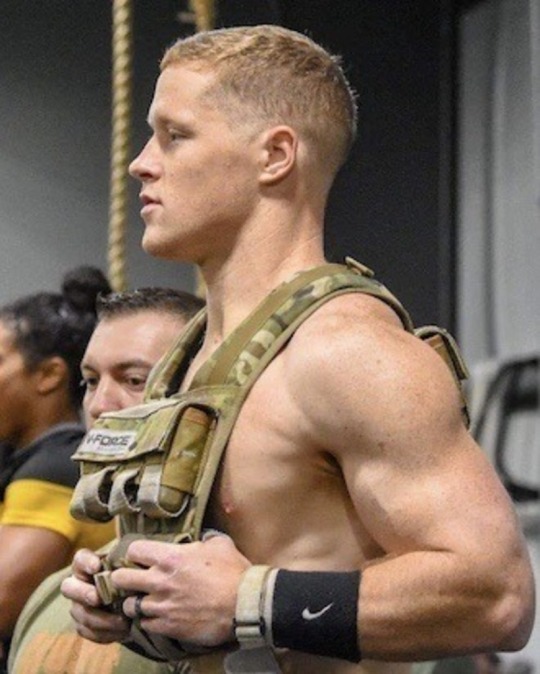
U.S. Army Warrior Fitness Team Member
Capt. Brian Harris
Capt. Brian Harris, was born in Edmond, Oklahoma and graduated from Edmond North High School in 2009. He was a member of the high school’s baseball and wrestling teams throughout high school. He enlisted in the Oklahoma Army National Guard in August of 2009 as a firefinder radar operator (13R) in field artillery. While serving in the Guard from 2009 to 2013, Harris attended the University of Oklahoma and actively participated in the Army ROTC program. During this time, he was introduced to functional fitness and began competing at a high level at various competitions around the country. In 2013, Harris commissioned into the Regular Army as a Medical Service Corps officer and that year was selected as one of twenty two medical service officers to attend flight training and be trained as an aeromedical evacuation officer (67J) / UH-60 Blackhawk helicopter pilot.
Harris’ assignment history includes Fort Rucker, Alabama where he attended Army flight school followed by Fort Carson, Colorado as a section leader, platoon leader and staff operations officer for the 2nd General Support Aviation Battalion, 4th Combat Aviation Brigade. During his time with 4th CAB, Harris participated in several full-scale training exercises and served one nine-month deployment to Afghanistan in support of Operation’s Freedom Sentinel and Resolute Support providing aeromedical evacuation services across RC-East and RC-North. In 2016, he was named the 4th Infantry Division’s “Junior Officer of the Year” for his efforts both in combat and garrison. After his time in Colorado, Harris returned to Fort Rucker to serve as the operations officer for their Air Ambulance Detachment (110th Aviation Brigade) known as “Flatiron” providing 24/7 crash rescue support to the Aviation Center of Excellence, as well as, routine support to 6th Ranger Training Battalion at Eglin Air Force Base and support to the local civilian population in accordance with the Wiregrass Letter of Agreement.
Harris is a CrossFit Level 2 certified trainer and master fitness trainer (phase 1) and has accumulated more than 700 hours of one-on-one and group coaching time teaching functional fitness methodologies to servicemembers and civilians enabling them to reach their fitness and lifestyle goals. He has competed at the local, regional and national level in functional fitness competitions. Under the old CrossFit season format, Harris was a 2 time regional qualifier and recently represented the United States of America as a member of the national team at the International Federation of Functional Fitness World Championships in Malmo, Sweden (2018).
His awards and decorations include the Air Medal with “C” device, Air Medal, Army Commendation Medal with 2 bronze oak leaf clusters, Army Achievement Medal with 3 bronze oak leaf clusters, Meritorious Unit Citation (2-4 GSAB, 4CAB), National Defense Service Medal, Afghanistan Campaign Medal, Global War on Terrorism Service Medal, Army Service Ribbon, Overseas Service Ribbon, NATO Medal, Combat Action Badge, Basic Army Aviator’s Badge, Parachute Badge, and the Air Assault qualification badge.
73 notes
·
View notes
Text
Trump’s anti-Ukraine view dates to the 1930s. America rejected it then. Will we now?

(Illustration: Brian Stauffer for The Washington Post)

This opinion column by Robert Kagan reminds us that history appears to be repeating itself. Trump's America First movement is an echo of the 1930s/1940s isolationist, neo-fascist America First movement that tried to keep the U.S. out of WWII. This is a gift🎁link, so you can read the entire article, even if you don't subscribe to The Washington Post. Below are some excerpts:
Many Americans seem shocked that Republicans would oppose helping Ukraine at this critical juncture in history....Clearly, people have not been taking Donald Trump’s resurrection of America First seriously. It’s time they did. The original America First Committee was founded in September 1940. Consider the global circumstances at the time. Two years earlier, Hitler had annexed Austria and invaded and occupied Czechoslovakia. One year earlier, he had invaded and conquered Poland. In the first months of 1940, he invaded and occupied Norway, Denmark, Belgium and the Netherlands. In early June 1940, British troops evacuated from Dunkirk, and France was overrun by the Nazi blitzkrieg. In September, the very month of the committee’s formation, German troops were in Paris and Edward R. Murrow was reporting from London under bombardment by the Luftwaffe. That was the moment the America First movement launched itself into the battle to block aid to Britain. [...] This “realism” meshed well with anti-interventionism. Americans had to respect “the right of an able and virile nation [i.e. Nazi Germany] to expand,” aviator Charles Lindbergh argued. [...] Sen. Josh Hawley (R-Mo.) has called for the immediate reduction of U.S. force levels in Europe and the abrogation of America’s common-defense Article 5 commitments. He wants the United States to declare publicly that in the event of a “direct conflict” between Russia and a NATO ally, America will “withhold forces.” The Europeans need to know they can no longer “count on us like they used to.” [...] Can Republicans really be returning to a 1930s worldview in our 21st-century world? The answer is yes. Trump’s Republican Party wants to take the United States back to the triad of interwar conservatism: high tariffs, anti-immigrant xenophobia, isolationism. According to Russ Vought, who is often touted as Trump’s likely chief of staff in a second term, it is precisely this “older definition of conservatism,” the conservatism of the interwar years, that they hope to impose on the nation when Trump regains power. [...] Like those of their 1930s forbears, today’s Republicans’ views of foreign policy are heavily shaped by what they consider the more important domestic battle against liberalism. Foreign policy issues are primarily weapons to be wielded against domestic enemies. [...] The GOP devotion to America First is merely the flip side of Trump’s “poison the blood” campaign. It is about the ascendancy of White Christian America and the various un-American ethnic and racial groups allegedly conspiring against it. [emphasis added]
Use the gift link above to read the entire article. It is worth reading.
____________ Illustration: The above illustration by Brian Stauffer originally drew me to this article. It does a great job of succinctly illustrating the Trump GOP's rightward march towards isolationism (and Putin-style dictatorship). [edited]
#america first#wwii era#republicans#trump#ukraine#history repeating itself#american history#robert kagan#the washington post
45 notes
·
View notes
Note
question: how do you find your research/sources? yours and dancing disasters' icemav fics are so inside baseball i love it, but how do you go about doing research?
I just read a lot & google stuff I don't know & am curious about. not that hard to start learning. and in terms of reading I've been interested in military history & milfiction my whole life. mostly related to the US army, actually--im extremely new to naval history and naval literature; all of that interest was driven by top gun. I've also been fortunate enough to visit a lot of the places I write about--ive been to Pearl Harbor a couple times & San Diego MANY times, for instance, and I've toured a few aircraft carriers and military bases. I've also finally bitten the bullet and kinda shifted my career path towards aerospace, so I've been learning a lot just by working in the aerospace & defense sector/spending a lot of time with people who do.
that's obviously not to say that I am somehow Educated in all this stuff. im pretty open on this blog about me being young & naive & wrong much of the time about how the real world works. so, you know, a lot of shit I just Make Up according to my preconceived notions of the military & the world.
here is my recommended military/navy reading list, some fiction and some nonfiction.
someone also asked recently if I had read anything good in the last 6 months--yes!! three new additions to my reading list: a) Billy Lynn's Long Halftime Walk by Ben Fountain. So goddamn good. If you have to read only one novel about the Iraq War, make it this one. It's more about America than it is about Iraq. b) Redeployment by Phil Klay. This one is a collection of short stories about Marines in Iraq, written by a USMC vet, talk about inside baseball. Crazy amounts of jargon in here, basically a "to-google" list. won the national book award which idk if it deserved, but it's good. c) No true glory: A Frontline Account of the Battle of Fallujah by Bing West. currently reading this one, really well done so far, talks a lot about how fucked the US strategy was in Iraq with Fallujah serving as a metonymy/case study for the war itself.
again... this is all mostly close-quarters-combat (infantry) literature, I really am not that interested in the navy/Air Force that much outside of top gun lol
though I did recently remember that in early 2022, before I was into top gun, I read "Wingmen" by Ensan Case, which is actually a gay US naval aviator romance set in WWII published in 1979! it's really authentic and kind of sad, obviously, since it was a 1940s navy gay love story published in 1979. I don't actually think Wingmen influenced how I wrote wwgattai or how I think of TG/TGM but I just remembered that I read that book in February 2022 and going "oh my god they were wingmen" so maybe you might find that book interesting.
#dancingdisaster's 'men like us' Directly inspired wwgattai and is the only other icemav/TG fic Ive ever read so I owe them a lottt#that fic opened my third eye as to 'omg what if ice lived' & then 'omg what if maverick died & ice never told him he loved him'#leading to my fics#thanks for the ask! PLEASE read billy Lynns long halftime walk#if for no other reason than its the best book I've read in 2024 and im already 12 books deep into 2024#its so well written...... should be on the shortlist for the best great American novel......#a scathing indictment of the American christian conservative.... mmm I eat it up good soup#top gun#military history#guys I just found out yesterday that my ex whom I haven't talked to in 2 years has been stalking my twitter &#has seen me gushing about my gay top gun fanfiction#well he shouldn't have stalked my twitter ... genuinely insane behavior this is why I ended things#love men
40 notes
·
View notes
Text
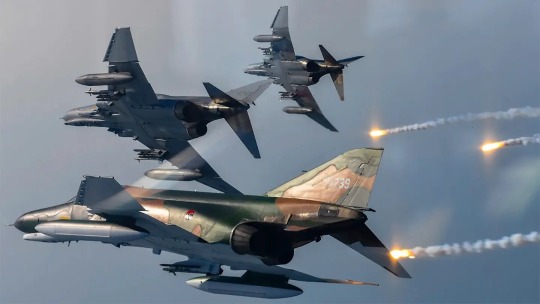
IMAGES: South Korea retres F-4 Phantom jets
Fernando Valduga By Fernando Valduga 06/08/2024 - 20:00in History, Military
0
Shares
518
Views
Share on Facebook
Share on Twitter
The Air Force of the Republic of Korea (RoKAF) has officially retired its F-4E Phantom II fighter fleet, marking the end of an era in the history of the country's military aviation. For about a month, the retirement of the iconic combat jets generated a series of beautiful images in flight over South Korea.
The retirement ceremony, held at the 10ª Fighter Wing in Suwon, Gyeonggi province, was attended by the Minister of National Defense, Shin Won-sik, and featured the final flight of two F-4E jets. Ten Phantom II were operational to date, marking the end of the 55 years of F-4D/E operations at RoKAF.

The ceremony, which took place on Friday (07/06), included commemorative flights of a series of modern fighters, such as the F-16, KF-16, FA-50, RF-16, F-15K and F-35A, symbolizing the transition from air defense duties to newer aircraft. These demonstrations highlighted South Korea's ongoing commitment to maintaining a robust and modern air force.


In his remarks, Minister Shin reflected on the history of the Phantom and its impact on the defense capabilities of South Korea. "The noble spirit of the Phantom, dedicated to safeguarding South Korea's airspace, will remain with us forever," said Shin, emphasizing the role of the aircraft in achieving air superiority over North Korea.

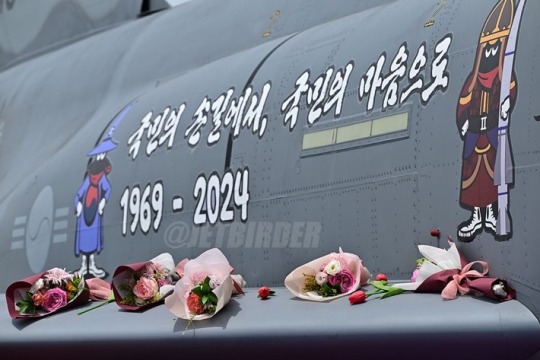
#PhantomFriday#PhantomPhriday#PhantomForever#PhantomPhorever pic.twitter.com/VcQFbYHw48


The ceremony also paid tribute to the pilots and patriots who sacrificed their lives in the service of the country. This dark moment highlighted the deep respect and gratitude felt by those who operated and maintained the F-4 Phantoms over the years.
The last unit to operate the type, the 153º Fighter Squadron of the 10ª Fighter Wing of RoKAF, conducted a farewell flight last month with four specially painted aircraft, celebrating its service over the years, including a camouflage painting scheme from the Vietnam War era.

The F-4 Phantom jets first arrived in South Korea in 1969, significantly improving the country's defense posture amid threats from Soviet-made North Korean aircraft. In the last 55 years, approximately 220 Phantoms (in three different versions during the heyday: the F-4D, RF-4C and F-4E) have served in various functions, from reconnaissance missions to interception missions.
Most of the South Korean aircraft were former United States Air Force (USAF), with the exception of two plots of F-4E purchased under the Peace Pheasant I and II foreign military sales (FMS) programs. The F-4 served as South Korea's main fighter until the full deployment of the KF-16 in 1994.

The aircraft were acquired by the U.S. one year after a failed assassination attempt by North Korean commands against then-President Park Chung-hee in 1968, raising the need to strengthen military capabilities to better defend against threats from the North.
The Phantom II was then a state-of-the-art aircraft that set the pace for the purchase of more advanced fighters such as the F-16 amid its transformation into an economic powerhouse.
The four aircraft that made a farewell flight in May paid tribute to several air bases that were part of their legacy of service and were even escorted by two Korea Aerospace Industries (KAI) KF-21 Boramae multifunction combat aircraft in part of their final journey.
The decommissioning of the F-4 Phantom fleet occurs at a time when South Korea is preparing to deploy the KF-21 Boramae, an internally developed supersonic fighter, by 2026. The KF-21 is expected to replace the old F-4 Phantom and F-5 Tiger jets, ensuring that the Republic of Korea Air Force remains equipped with state-of-the-art technology to face future challenges.
The South Korean government announced in February that it will build more KF-21 aircraft in 2024 with an allocated budget of about 178 million dollars, although series production should not begin until mid-2026.
Tags: Military AviationF-4 PhantomHISTORYROKAF - Republic of Korea Air Force/South Korean Air Force
Sharing
tweet
Fernando Valduga
Fernando Valduga
Aviation photographer and pilot since 1992, he has participated in several events and air operations, such as Cruzex, AirVenture, Dayton Airshow and FIDAE. He has works published in specialized aviation magazines in Brazil and abroad. He uses Canon equipment during his photographic work in the world of aviation.
Related news
MILITARY
Sweden will contribute to NATO Air Policing with Gripen fighters
06/08/2024 - 19:23
MILITARY
IMAGES: Oregon National Air Guard receives first operational Boeing F-15EX
06/08/2024 - 14:33
SMOKE SQUADRON
Smoke Squadron announces its two new pilots
06/08/2024 - 09:27
MILITARY
IMAGE: Swiss Air Force tests highway operations with its F/A-18 Hornet fighters
06/07/2024 - 19:14
MILITARY
U.S. Air Force grants contract to L3Harris to modernize the B-52 Stratofortress
07/06/2024 - 16:00
ILA BERLIN
Airbus presented its innovative Wingman stealth drone at ILA 2024. What we know so far
07/06/2024 - 14:00
17 notes
·
View notes
Text
No. 55 - Finnair [+ Centenary Livery]
So I know I'm in the process of writing a bunch of longer posts and thus haven't posted in absolutely forever, but I had to let something cut the line very quickly because in this case it was somewhat time-sensitive. I've missed the actual date by two months, but if I get in a post while it's still 2023 (...in my timezone, at least, so sorry to actual Finns busy enjoying 2024) I think that counts, and this entire blog is about what I think, so that means it counts.
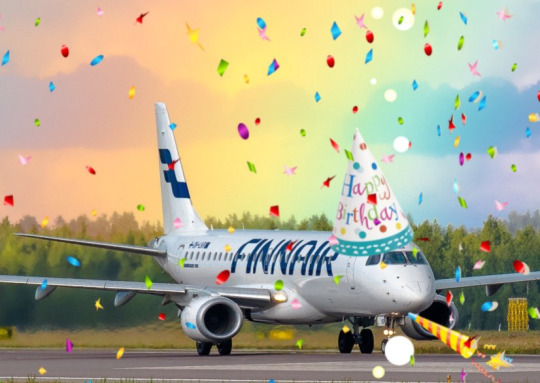
On 1 November 2023 Finnair became the sixth airline to turn 100 years old, consistent with its status as the sixth oldest airline in continuous operation. I wish I'd started this blog earlier in the year, or prioritized differently, because Aeroflot and Czech Airlines also turned 100 in 2023, but...well, I didn't. You'll probably see them both in 2024 instead. Finnair, however, was requested by @kuivamustekala - particularly their centenary liveries. Requested a long time ago, even. So I'm going to hope that late is better than never and throw Finnair one last birthday party to wrap up 2023 by looking at where they started, where they are now, and what they've been doing to celebrate.
1923: PROTO-FINNAIR
Finnair, obviously the flag carrier of Finland, was founded in 1923, but its first service was in early 2024, using a Junkers J.13 (fitted with obligatory floats, as there were no suitable airstrips in Finland at the time).
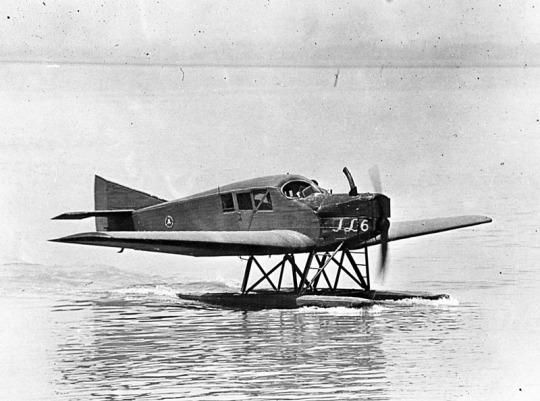
image: Joseph Eaton via US Navy National Museum of Naval Aviation This is actually the US license-built version, the Junkers-Larsen JL-6, but I couldn't find any pictures of actual J.13s on floats.
Unfortunately, Finnair was founded under the name 'Aero', which is probably the actual single worst name for an airline I have ever heard. We can jest and joke about things like Jet2 and Fly Air, but I sincerely do not think I have ever seen anything with worse SEO than an airline named 'Aero'. Even for 1923 this was fairly dire - back then, as for much of history, airlines were generally named for the area they served. Aero may have been a private company, rather than state-owned, but that didn't mean they couldn't name themselves for the area they served - private airlines have always done this and still do. Incredibly enough, there was a second 'Aero' founded in Poland in 1925, but that was quickly merged into what would become LOT Polish Airlines, shedding the name like a chrysalis.
Bafflingly, even when the Finnish government bought the airline in 1946 (they still own a majority share of it today) they didn't bother to change the name. They did begin writing 'Finnish Airlines[1]' on the fuselages, but as far as I can tell this appears to have been more of a stylistic flourish of sorts than an actual rebrand, or maybe even a clarifying subtitle on the very nonspecific name. In 1953 they began marketing under the much catchier 'Finnair', but the company remained legally named 'Aero' until literally 1968 and the fuselages still read 'Finnish Airlines'.
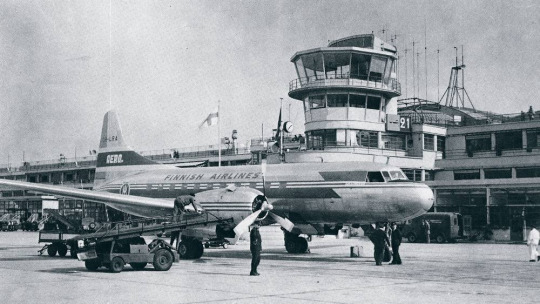
image: Finnair An Aero/Finnish Airlines Convair 340, photographed in 1953 in a livery which included both the large 'Finnish Airlines' wordmark and 'Aero' on the tail.
Early Finnair, like most early airlines, didn't have a particularly standardized livery for its fleet, and even where it did it's not very well documented. Finnair unfortunately has some of the poorest documentation for livery evolution of any large airline I've discussed so far, which really surprised me. That said, it's when the name became Finnair that things begin to be easier to find, and so that's where I'll begin.
1968: CLASSIC FINNAIR

This original logo[2], introduced in 1968, was designed by Kyösti Varis - at least, that's what every logo database I looked in said. I actually couldn't find either Finnair or Varis confirming this[3], but I still think it's probably true. Unlike designers like Vic Warren and Lindon Leader, who wrote and gave interviews about their designs for major airlines, Varis appears to have other preoccupations. He is enormously successful and prolific, to the point where his website doesn't even mention Finnair. According to the timeline he provides he would have either been creating this logo freelance or in his very last days at Advertising Agency SEK (probably the latter, since they did the two subsequent iterations), and based on his history as a typographer I think it's safe to say the letterforms are his creation as well. Also according to his timeline, he is younger than Finnair! And we almost have the same birthday.
I like the original Finnair branding. It's not ostentatious, but it's nice and sleek, with that forward slant I love in airline branding and a long unbroken line (both in the 'F' logo and in the even heights of the letters in the wordmark). It looks aerodynamic and the rounded, blocky letters have a hint of that 60s futurism while not being gimmicky. It's kind of incredible looking at it next to the '91-'94 FedEx wordmark, which occupies the opposite end of the sliding quality scale of TRON-looking text. The design as a whole is simple enough to easily reproduce but distinct enough to easily recognize. The shade of blue chosen is a fair bit lighter than the blue of the Finnish flag, but visually pleasing enough. They basically keep iterating on this general concept for the rest of their history, which I think is fantastic - no need to get rid of something that's working for you. It's nice to see an airline not feel pressured to reinvent its logo and livery every 20 years. That's about it for the logo[4] - what about the livery?
As mentioned prior, Finnair's liveries, before quite recently, were very poorly documented. Variants definitely existed between different types and different periods in the company's history, but the broad strokes of the branding seem to have remained almost startlingly intact for around thirty years.
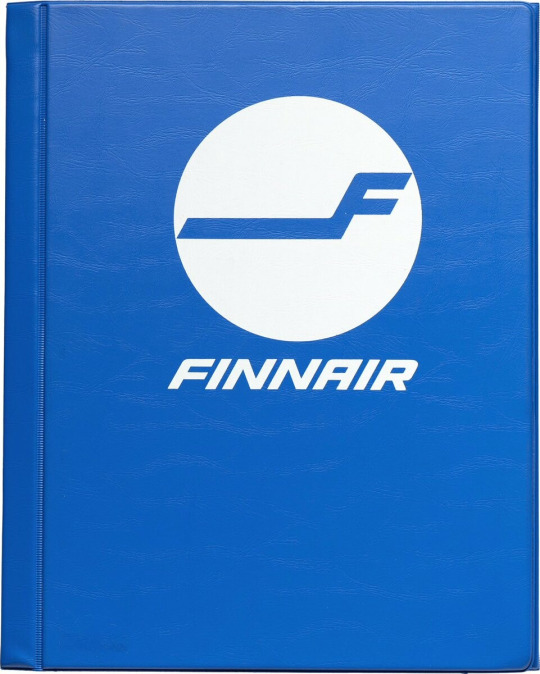
image: Letterform Archive The cover of a style guide from 1985. If it's changed from the 1968 original, I can't tell how.
But I'm really here to talk about one thing: the liveries.
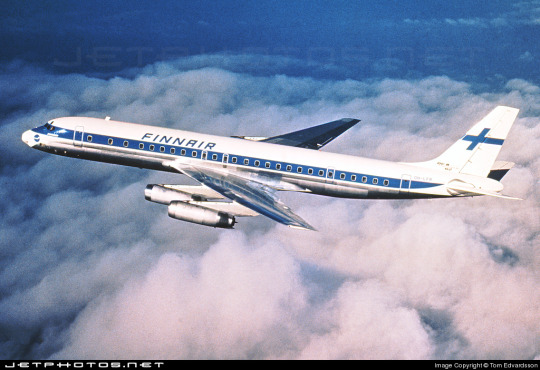
The above image was from Finnair's own archive and was taken in 1968[5], making it contemporary with the introduction of the Kyösti Varis branding, as well as lining it up with the 1969 addition of DC-8s, like the pictured airframe.
For the majority of Finnair's history, their livery is always going to look something a little bit like this. Primarily white, with a thick blue cheatline (in what I call the domino-mask style, where it's vertically centered around the cockpit windows) that lightly flips up at the very end and a blue cross on the tail to represent the Finnish flag.
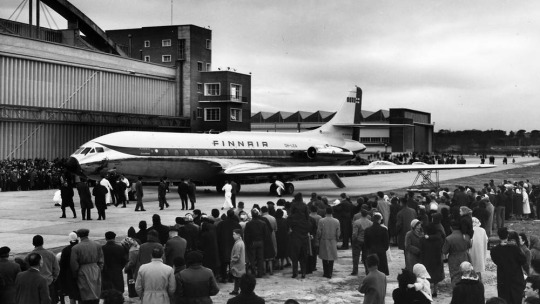
Finnair says this image is from 1960. If so, the livery was already well on its way to existing prior to 1968, with my guess being that it was introduced in 1960, along with the first jets in Finnair's fleet - the pictured Sud Aviation Caravelle, which pioneered the swept-wing, aft-engine format later seen on immensely popular jets like the DC-9 and Tu-134 - the latter of which was commissioned specifically because Nikita Khrushchev was so impressed with the Caravelle's aft engines and the quiet cabin experience they provided. It's a plane with a lot of unique visual features, featuring a nose that looks almost slanted downwards (a copy of the de Havilland Comet nose), a cruciform tail (instead of the more efficient T-tail used for future rear-engined designs), and triangular passenger windows. Most crucially, though, it was more or less the first short-range jet on the market. This made it perfect for an airline like Finnair, which at this point didn't really go that far from actual Finland.
This 1960 photograph provides a very strong blueprint for what was to come. It's the first iteration of the livery to say 'Finnair' instead of 'Finnish Airlines', and it's introduced a modern-for-1960 single-rule cheatline, although this early version was flipped horizontally, curling up at the front to frame the cockpit windows instead. (I think the white paint also cuts off behind it, leaving the space in-between the cheatline and painted nose blank metal, but in black-and-white it's somewhat hard to tell.) I do think I prefer the modern version. The use of the white downward curve with no blue hemming it in creates a really nice effect where it blends with the unpainted metal underside, due to the metal being right where you would expect to see a shadow anyway. (This effect is why I'm not quite sure where the paint ends on the Caravelle, and am just guessing based on which parts are noticeably reflective.) I definitely prefer the change made to the tail, where the single line of trim at the end of the rudder was replaced with a white canvas for the Finnish flag.

While I do tend to have a slightly pessimistic outlook on primarily-white liveries, I will say that if you're going to have a primarily white plane, and you are the flag carrier of Finland, this is a fairly understated and stylish way of incorporating it. While I probably would have done it on the main body, over where the first set of doors is, instead of on the tail, I think this is far from the end of the world. What they have is a nice, elegant taper where the tip seems to point directly at the tailplane, and it looks neat and intentional. A lot of airlines tend to just awkwardly slap a logo on their tail, which often looks really sloppy due to poor alignment or even just out-of-place entirely, and Finnair avoids that while keeping the tail from being completely blank. Having an element on the tail that's more horizontal than vertical, like the old 'AERO' rectangle or the tail rectangle on the one decent livery Lufthansa ever had.
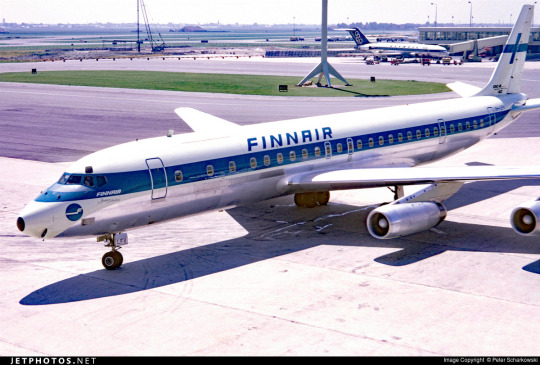
If you look in the background, you can see that wow has the Olympic Air livery looked like that for a long time! But that's a story for soon.
Additionally, some details were added on the nose. You can see on this DC-8, photographed in 1969, that the nose features an e-girl cheek stamp of the Kyösti Varis logo. Next to it is the name of the aircraft - in this case, Jean Sibelius - in really difficult-to-read thin text. (Finnair unfortunately appears to have stopped naming their planes by the late 1970s, but at one point they would frequently be named for Finnish people and places.) The 'domino mask' goes quite a bit beyond the cockpit windows to create a wider line from the side. I wish that the logo could have been integrated some other way, because the extra little blue thing just looks cluttered, but I can't imagine how they would do it without just replacing the cheatline. I mean, that would have been an option - indeed, it's what I would have done[6] - but assuming that they keep this general look I think the logo just can't fit in on the livery. The engine nacelles, maybe? Though that would still present issues on the Caravelle, where the engines are directly over the cheatlines. I also wish they would have made it a bit easier read the name, because I like to know what the plane's name is - thankfully, some later paint jobs actually do this before, tragically, Finnair stops writing names on their planes at all.
I believe this to be the strongest iteration of the classic Finnair livery, and it was pretty obviously optimized for the DC-8. Modern airlines tend to not bother adjusting their liveries between types, creating some absolute travesties of proportion, but Finnair boldly went in the opposite direction by modifying it for each airframe and yet still having it look worse.
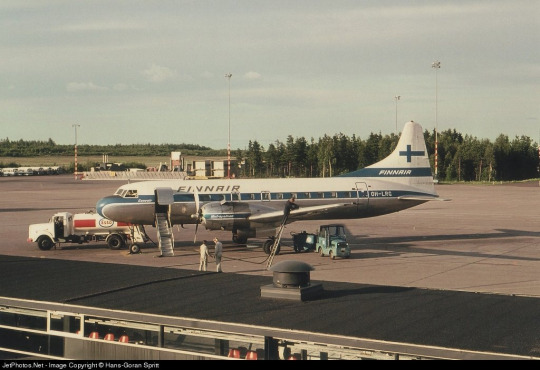
The sharpest deviation arises in the CV-440 version of the livery. This image is from 1971, just two years after the DC-8 liveries would have carried their first passengers, and it's wildly different. The cheatline is lowered sharply, sitting below the cockpit windows and wrapping around to contour the body of the airplane. There's a certain je ne sais quois to the domino mask that I find myself missing here. This design also has an unnecessary second 'Finnair' added to the tail, which kind of looks awkward stacked on top of the existing cheatline besides being redundant, and the Finnish flag on the tail is somewhat awkwardly made free-floating. It feels a lot less sleek and a lot more arbitrary.
On the other side of the plane the cheatline goes down quite a bit farther than on the jet models, probably because they thought it would be a better way of negotiating the Convair's rather bulbous nose, and I actually think I prefer the wide, upturned variant. This version, if anything, is too close for my taste to the livery VARIG operated in a similar timeframe. There are a lot of differences, yes, but in the 70s having one big solid cheatline on a white body and metal underbelly was the equivalent of the Lufthansa Line, so if you toed said line, be it cheat or Lufthansa, you risked becoming easily mistakeable for any airline with too similar of a color scheme. And blue-on-white was maybe the most common color-scheme at the time.
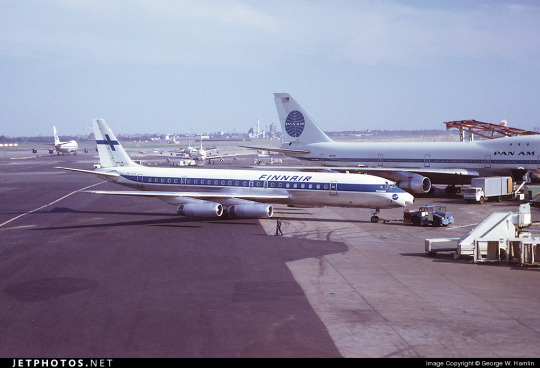
I doubt Finnair shared many tarmacs with VARIG, but here they are with Pan Am, and they could also expect to run into airlines like Sabena, Icelandair, and probably a half-dozen I've never heard of, all competing to be the one the others get mistaken for. It's a tricky position to be in.
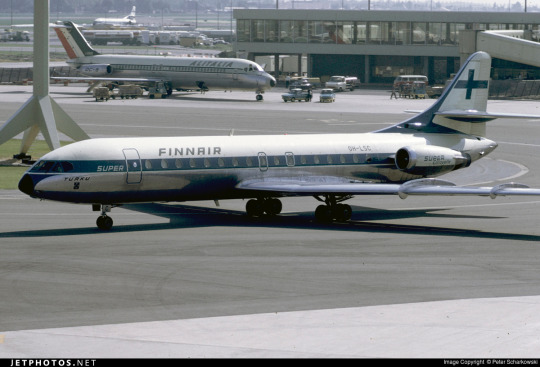
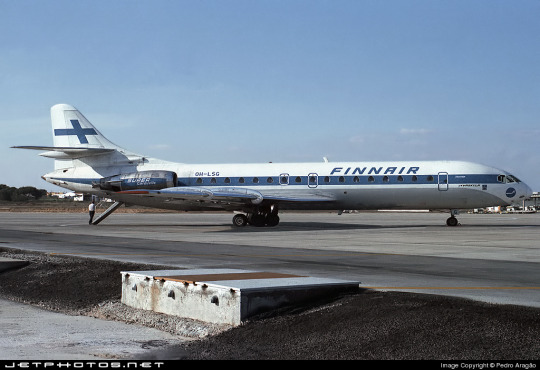
I do quite like the livery on the left, maybe even more than the DC-8 one, but I can't seem to find any other airframes painted like this. I'm not sure why this one is.
These images are from 1971 and 1969. They are both the same model of airplane - the Super Caravelle or Caravelle 10B. Their liveries are completely different. And that's just how it was back then - not even standard within the same airline, somehow still trying to stay distinct from dozens of other non-standardized blue-on-white cheatlines.
When evaluating classic Finnair, I have to keep myself tempered in both directions. When I think it's clean and well-proportioned I have to remind myself that it's just a complete nothingburger. When I think it's a lazy and cowardly non-design I have to remind myself that, no, at its best classic Finnair does look like it was designed with some thought, and it does have some traits that feel at the very least interesting enough to merit not being totally dismissed.
But...look, I have to give classic Finnair a D+. Because they tried, and they did something, sure, but it's ultimately not something especially memorable and the implementation is just spotty.
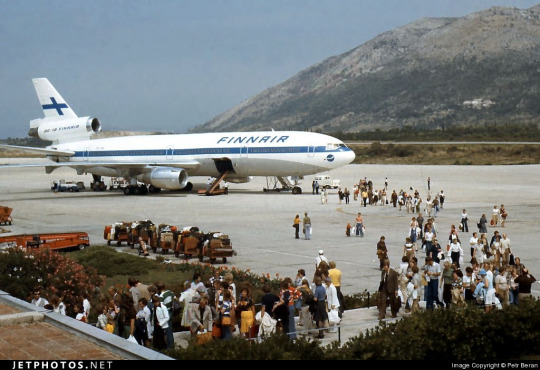
Even given a canvas like the DC-10, they fumbled. The DC-10, in my opinion, was a big test for them. And I do mean big. In the DC-10 is a plane with all the space in the world to add visual elements, and a space where just a couple lines can go from a detail to a fin that towers over anything that isn't a 747, showing off the Finnish flag as if someone had flown it from a building mast. The third engine, which I feel like a lot of airlines really struggle with on the DC-10, gets a nice horizontal line of writing that's not intrusive but helps prevent it from feeling like a giant gap. The wordmark gets larger, is moved forward, gets to really own the space it takes up instead of being squeezed in. And...they made the cheatline just....a really thin flat line that looks bad and stiff and boring. There's nothing setting them apart from Icelandair, and Icelandair's livery from this point in time was so boring that my only comment on it was that it looked like they forgot to paint the rest of the plane. You can do white planes well, but Finnair just really doesn't get there.
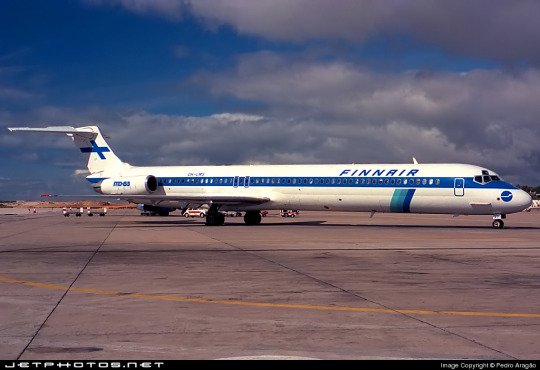
...hey, Finnair? You can't just decide to do belly stripes but worse, Finnair, you're literally next door to like two thirds of SAS and that livery was designed from the ground up. They have a couple of near-misses with SAS's toes but this is the one that makes me actually go 'is this allowed?'. It seems to have been exclusive to their late-80s MD-80 fleet, but it's just incredible to me that it ever happened. (That said, those three shades of blue are so nice together and I wish they had ever brought them back. I understand the appeal of sticking to the stark contrasted blue-on-white of the flag, but there's so much potential out there!)
1997: NEW TYPE, NEW LIVERY
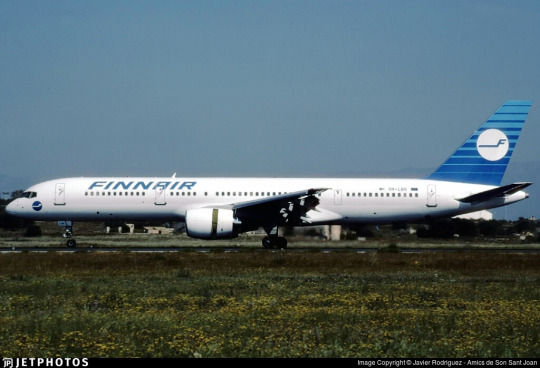
I really like the 757. It deserves a better livery than this.
Removing the cheatlines was a very trendy choice to make. This is the sad beast I call the Deltalite - a Deltalike but without the painted nacelles and belly that are usually slight redeeming factors. There's such a beautiful design on the tail that could have been put on the whole fuselage, honestly, and that's sad, but even on the most granular of levels...why keep the little cheek stamp if you have the logo visible on the tail now? Weird choice. Being so desperate to do the Deltalite thing everyone else is doing that you get rid of your country's flag on the tail is just a bad choice of priority, I think. There's not much to say about this. Honestly, I'd drop it to a D-. There's enough happening that it would lose something by being painted into Star Alliance colors, but it wouldn't lose terribly much.
2000: NEW FINNAIR

Oh, Finnair. Why? Did no airline resist the siren song of getting way too into airbrushing in the early 2000s?
Maybe I just have whatever the opposite of nostalgia is for the early 2000s, but this just makes me sad. They've made the wordmark look worse, overcomplicated the simplicity of the logo, and gone ham with the gaussian blur.
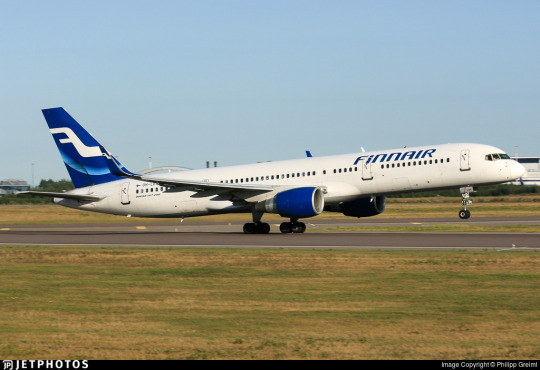
Look, it's not all that bad. The shades used on the actual plane are noticeably darker, and the colors at least don't look half bad now. And they've even bothered to paint the engines this time around! But...come on. You've changed 30 years of something that was working just fine for...this? Something which maybe climbs up to a flat D?
The 2000 brand overhaul, including the logo, was done by Finnish agency SEK & Grey. They're nearly as old as Finnair and have worked for brands as prominent as Coca-Cola and Kellogg's, but their about page puts Finnair front and center. They have an entire page describing their Finnair work.
Despite claiming to have included humanity and warmth and movement, I see none of this. I'll admit upfront I generally dislike what's dubbed 'Nordic' design. It's not the minimalism which I dislike but the banality.

What does any of this have to do with Finnair? What here represents the history of one of the world's oldest airlines? What here really speaks to the Finnish people? Why is just designing something generic and making sure it's all crisp (when you're photographing it fresh out of the plastic, before it's been tripped over and stepped on and yanked down staircases and accidentally sat on and stained with tea) considered a substitute for designing something that people will see years down the line and get nostalgic for? I'm nostalgic as hell for Alitalia, an airline that doesn't exist anymore. I still use the bag from an amenity kit I got on Alitalia nearly ten years ago to store small essential things like toothbrushes and medication while traveling, but I wouldn't know it was Alitalia by looking at it, because it's lovely and convenient and ergonomic but it's literally just grey. It evokes nothing, and it doesn't even say 'Alitalia' on it anywhere. Nothing here could ever be considered ephemera or memorabilia. I could steal Finnair's look at the Gap.
2010: SORRY, HERE'S NEW FINNAIR FOR REAL THIS TIME

SEK & Grey gave it another shot. This one's a lot better.
I like the change in the logo, first off. And this, the word 'Finnair', is the logo, but I'm comparing it to the earlier wordmark. 2000's attempt felt like it was taking the original and just trying to sand off the corners to make it more modern, but the 2010 take on it actually shapes each glyph into a neat little space-age thing that creates this curved shape by way of a lot of straight lines, in a way that feels visually pleasing and interesting. I enjoy the square holes in the A and R, the return of the crossbar on the N, and the extreme range of widths which gives the letters a real weight to them. This isn't a typeface - these glyphs exist in the context of the word FINNAIR in this exact configuration and one of four colorways. Finnair does have a proprietary typeface, Finnair Sans, and it looks nothing like this because this is not a font, it's a logo.
I think it is a shame that this is the logo now. I really liked the F. And they haven't gotten rid of it, but it's now been relegated to an official subordinate position, according to their branding guide:
The official Finnair logo is the text version of the logo, and it is primarily used. The F emblem is used as an additional symbol.
Look, I'll always think it's a shame when your main logo is just the name of your company. Some airlines do it, and it feels like an empty space to me. It can be satisfactory but not outstanding. When you start out with a nice little symbol and then take it away, though, I do feel somewhat robbed.

It stings extra because I really like the way the new F looks. It has that long brushstrokey look and it almost makes me think of Hebrew characters. The way it tapers now really adds to the feeling of movement I get from it, and it's a great base for a livery. Now that it's darker, even though this does bring Finnair into competition with airlines like SAS, LOT, TAROM, Lufthansa, and even Ryanair when it comes to dark-blue-on-white, it also contrasts better with the main body, and it's still light enough that you can recognize it as blue. Anyway, it doesn't take a genius to know how to integrate this into a livery. Long line for the fuselage, go up to match the tail...
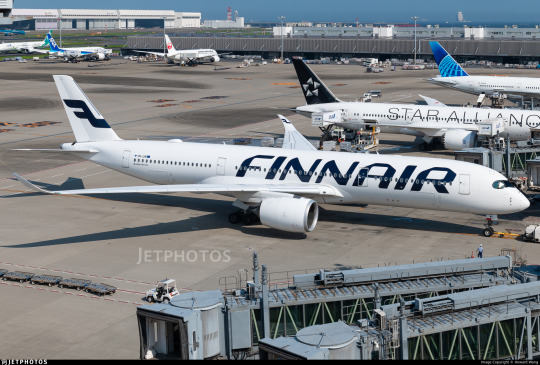
Finnair. Are you serious, Finnair?
Look! I get it! Billboards are in now, it's fine, I get it. it's probably the nicest billboard I've seen in a while, font-wise. It feels comfortable on the fuselage and it feels like it earns the space it occupies. The F is nicely centered on the tail, cuts off at a pleasant point. But...why?
I really can't be too mean about this. I want to be meaner than I actually can justify, because I think if any other airline made their plane this featureless I would hate it but Finnair's billboard livery is actually nice enough and everything is placed well enough that it's not at all unpleasant to look at. It's an acceptable livery. If maybe 25% less planes were basically all white it would shoot up in my esteem. I don't really like the fact that they put the little Fs on the inside of the wingtips of their A350s, but that's really my only nitpick. It's just sort of...bringing a really fantastic loaf of bread to a potluck when you were asked to bring baked desserts. You've done a very good job, but you didn't quite get the assignment.
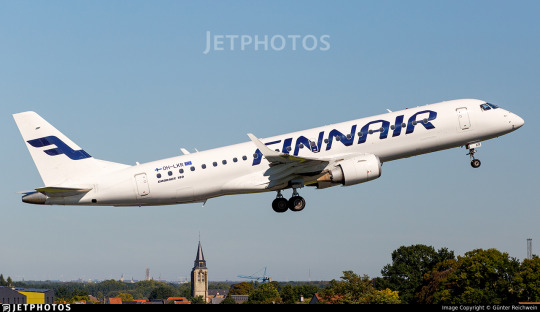
It's a bit hard to critique the modern Finnair livery in detail because I think it's executed fine. There's nothing really wrong with it except that it has a logo that could lend itself to all sorts of interesting shapes, it has 30 years of variants of a very specific design to draw on, and it's chosen to go tabula rasa just to be all clean and minimal instead of doing any of the interesting things it could have with this new start.
I want to dislike this take on the Finnair livery, but at the end of the day I just don't. I think it's completely satisfactory. A lot of airlines try to get this look and somehow end up seeming cluttered for it. Finnair is one of the only instances I can think of where a white fuselage with just a wordmark has looked okay. It isn't ugly. It hasn't failed at the thing it's trying to do, but I think that it should have tried to do something else.
At the same time, though, this is the most Finnair that Finnair has ever been. The blue cheatline and the Deltalites were stumbling over well-trod ground. The modern livery, at least, isn't sloppily tail-heavy and seemingly thoughtless.
I give modern Finnair a C. This took an excessive amount of deliberation, but it really is...good enough. It's satisfactory. It's fine! I would have taken a completely different direction, but they have done a good job with their sort of lackluster idea. It's alright. We'll check on them again in another hundred years and see where they're at.
2023: CENTENAIRY
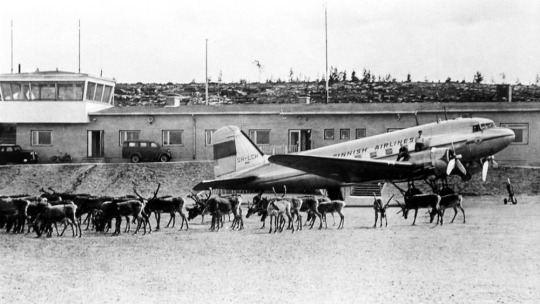
A century is a very long time. Finnair is older than my oldest grandparent. Finnair is older than over a dozen sovereign countries. Finnair is older than aerodromes in Finland. It's older than every currently operating airline except KLM, Avianca, Qantas, Aeroflot, and Czech Airlines. As of the first of November, Finnair is in triple digits.
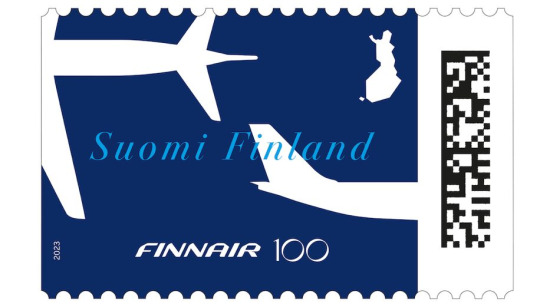
I adore this centenary stamp Finnair has put out, celebrating the long relationship between aviation and the mail. It's not complex, but it's not barren, either. It combines the dark blue of the modern livery with the light blue of the classic one, all with the white silhouettes of airplanes elegantly soaring over an outline of Finland. The outstretched white wings on the deep blue have the grace of a giant fish swimming beneath a glass-bottomed boat.
But of course it isn't just stamps. Finnair is an airline. Airlines do special liveries. Qantas and KLM both slapped a big 100 sticker on an airplane for their big anniversaries. Finnair has of course done something similar.
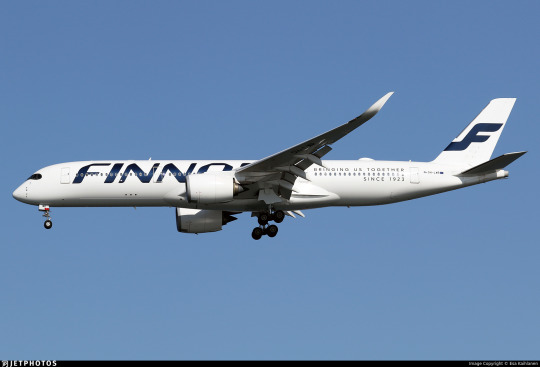
Three airframes - the pictured A350-900, OH-LWR, and two A320s - OH-LXK and OH-LXM - have had a 'bringing us together since 1923' sticker applied. Matching the rest of Finnair's branding, it's certainly quite minimal, but it's a nice gesture. It's not what people have been talking about. That's OH-LWO and OH-LWP, both A350-900s, who have been given something more substantial to wear.
youtube
I'm going to assume that after its renaissance on tumblr a few years back most people reading this are familiar with the Moomin franchise. I definitely am, because when I was in my larval stage my mother first taught me to read Russian using an omnibus book of Moomin stories. Creator Tove Jansson apparently designed both the shape of the eponymous white critters and the sound of the name Mumintrollen itself are designed to evoke a feeling of softness, and it's clear why these characters are so beloved.
It isn't the first time Finnair, which frequently collaborates with Finnish brands and highlights its Finnish roots, has featured Moomins.
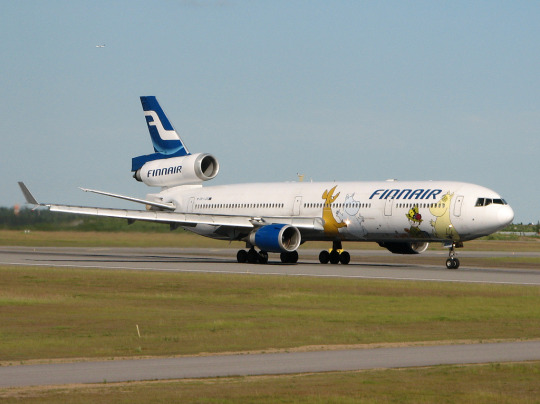
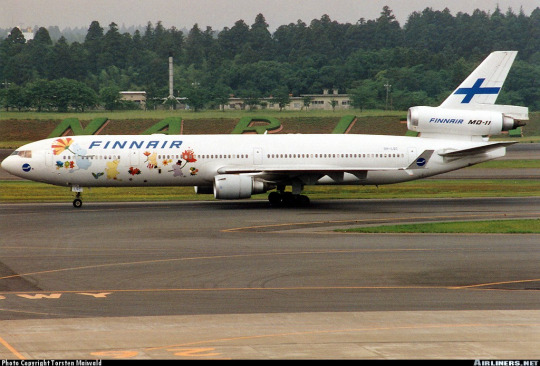
image on left: Antti Havukainen
In the 1990s, the airline first flew a Moomin jet. They had another in the 2000s. Both were withdrawn from service before 2010. It's been a while now since Finnair flew their last MD-11, but when celebrating their 100th birthday, a milestone that the vast majority of airlines will never see, they chose to do it by way of a soft Moomin embrace.
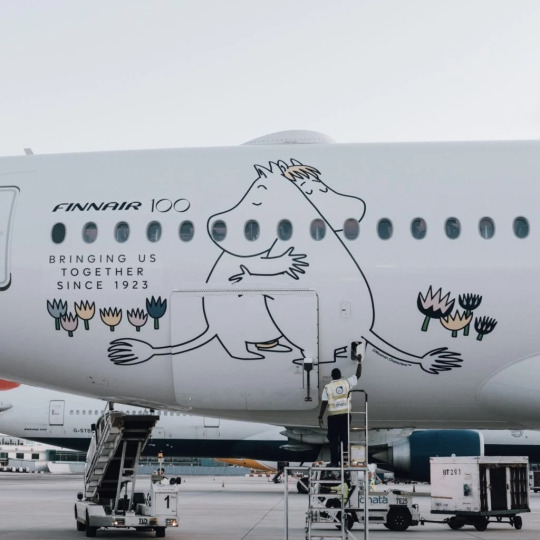
image: Changi Airport
And, I'll be honest, I think it's very sweet. It got an actual, sincere little smile out of me.
100 years is a really long time. In 1923 aviation was unrecognizable. What we would now consider an airliner didn't really exist yet - space for ten passengers, closed cockpits, and metal fuselages were the exceptions rather than the rule, and the Ford Trimotor was two years from its first flight. Cabin crew were barely even a concept. Airplanes, for all intents and purposes, were considered a type of boat. A nonstop flight across the Atlantic was a ridiculous concept. In a report published by the US National Bureau of Standards, it was said: 'there does not appear to be, at present, any prospect whatever that jet propulsion of the sort here considered will ever be of practical value, even for military purposes'. There were no aerodromes in Finland, so a small company called Aero attached floats to a plane just large enough for four passengers and took them from Helsinki to Tallinn.
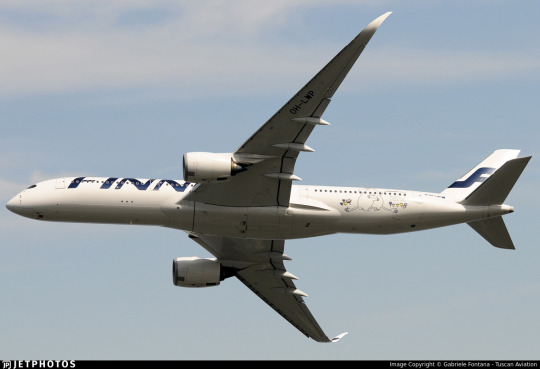
Look how far we've come.
Footnotes:
[1]: The Finnair website's history page, which I used as a source for much of the background and several images in this post, renders it as 'Finnish Air Lines', but on the airplanes themselves it clearly has no space, so I've corrected that seeming error for them. I don't know why this discrepancy exists, because as far as I know during this period they were marketing themselves as Aero so this text would only have existed on the livery itself. [2]: Actually, I very occasionally see this version where the F logo isn't fully surrounded by the circle and the F in the wordmark doesn't have the rounded top, and I don't know which came first or if the less round version is just somehow...not real? I did try to figure this out, I swear, but at some point I realized I am literally not a professional logo historian, and nobody is going to be let down if I don't brute-force an answer despite not even speaking Finnish, and I should finish writing the post before it's 2024. [3] The closest thing to an official source I can find is the descriptions of two listings for the centenary stamp including a quote from designer Ilkka Kärkkäinen attributing it to him. I don't at all doubt that he did design it, but I always like to find concrete attribution for things if I can and would hate to spread misinformation and the sparseness of confirmation here is something I find very strange. My best guess is that there's plenty of good sources on it in Finnish but nobody has bothered to make it as clear in English. [4] Admittedly this is a stretch, and I certainly don't think it was intentional, but it does remind me of the longship prow used in early SAS liveries. This motif was introduced in 1946 and continued to see use after the Finnair logo was introduced. The overlap is fairly limited in that SAS never used the longship in their logo (...I kind of want to talk about their logos one of these days) and the Finnair livery you'll see shortly doesn't look like SAS's at all, plus SAS has the extra pink on their liveries, but I couldn't get it out of my head that they do look sort of alike. [5] The absolute hero who uploaded it to jetphotos mentioned that Finnair had given him the photograph while planning to dispose of it, and this makes me wonder if the lack of documentation is just because Finnair doesn't hold onto their old materials, which makes me very sad. A lot of companies, more broadly, didn't bother to keep records until somewhat recently, but in Finnair's case it seems to be particularly egregious. As someone literally studying to be an archivist it makes me exceptionally sad to see history lost just because nobody cared enough to preserve it. [6] Maybe they didn't want to look like backwards SAS. Who can say?
#tarmac fashion week#finnair#grade: c#grade: d+#region: finland#grade: d#grade: d-#region: northern europe#era: 1960s#era: 1970s#era: 1980s#era: 1990s#era: 2000s#era: 2010s#era: 2020s#special liveries#commemorative liveries#requests
50 notes
·
View notes
Text
Rooster's File (Eng ver.)

General Data
Name : Bradshaw Bradley
YG (Year Group) : 09
Date (this file was) Processed : 200415
SSN (Social Security Number) : ****
Designator : 1310 (Naval aviator)
Date of Birth : 840627
Age : 35
Prof. Serv. Date:
Promotional History
Current Flag :
CAPT (Captain, O6):
CDR (Commander, O5):
LCDR (Lieutenant Commander, O4):
LT (Lieutenant, O3): 150522
LTJG (Lieutenant junior grade, O2) : 130522
ENS (Ensign, O1) : 110522
Current WRNT :
Current Duty
Present Duty Station Title : STRKFIGHTON EIGHT SEVEN (Strike Fighter Squadron 87 / VFA-87)
Present Billet Title : AVTR (Aviator)
Education - Formal (College)
College : UVA (University of Virginia)
Year : 09
Level : BACH/1 PR (Bachelor's+ 1 In-Progress?/ 1 Primary??)
Major : POLY SCI (Political Science)
-
Language : SPA (Spanish)
Proficiency : 1010 (Basic)
-
Sub Specialty : ED2 (TRV LSO CVN / Training Landing Signal Officer (LSO) for Aircraft Carriers (CVN) - completed the necessary training and is qualified to serve as an LSO on nuclear-powered aircraft carriers (CVN))
Education - Service Schools
(Navy-sponsored graduate courses, administered by the Superintendent of the Naval Postgraduate School)
Course Name : (none)
Completed : (none)
Duration : (none)
Previous Service
Active Duty Base Date | Previous Military Service | Year | Months | Highest Rate-Grade
060413 | ACTIVE | 4 | 01 | HT2 (Hull Maintenance Technician)
090522 | ACTIVE | 11 | 02 | LT/O3 (Lieutenant, O3)
Personal Decorations/Award
AIR MDL S/F (Air Medal S/F) : 02 ("Strike/Flight" for participation in sustained aerial flight operations)
NAV COM (Navy Commendation Medal) : 02
NAV ACHV (Navy & Marine Corps Achievement Medal) : 03
NATL DEF (National Defense Service Medal) : 01
Special Qualifications
AVIATOR
SFTI (Strike Fighter Tactics Instructor. TOP GUN Graduate)
LT ATK FA1801 (Light Attack FA-18 : Successfully completed an ACTC curriculum Level II)
PLTTRA JET 01 (Pilot Training Jet : Successfully completed CNATRA Training Wing I or Training Wing 2 Jet syllabus)
Remark
Pay Status - D82
Total Years Federal Service - 15.03
Address: VA BEACH VA (Virginia Beach, Virginia)
--
Sources:
- ED2/TRV LSO CVN (Thanks to @moon8622) / LSO NATOPS: https://info.publicintelligence.net/LSO-NATOPS-MAY09.pdf
- Service Schools: https://mccareer.files.wordpress.com/2015/06/service-schools-complete-list1.pdf
- AQD codes : https://www.mynavyhr.navy.mil/Portals/55/Reference/NOOCS/Vol1/Manual_I_78_PTD_AQD_Jan22.pdf?ver=7s9cc609qUjGPP9xD8cFEg%3D%3D
- AIR MDL S/F : https://en.wikipedia.org/wiki/Air_Medal
- NAV COM : http://www.navywriter.com/navy-commendation-medal.htm
- NAV ACHV : https://en.wikipedia.org/wiki/Achievement_Medal
- NATL DEF : https://www.medalsofamerica.com/blog/national-defense-service-medal-blog-post/#:~:text=The%20National%20Defense%20Service%20medal%20is%20awarded%20to%20those%20who,Reserve%20during%20the%20Gulf%20War.
103 notes
·
View notes
Text
In honor of Black History Month, here are 10 Black Americans who were pioneers of their time. (I apologize that this post is late. I’ve been preoccupied with midterm exams)
Eugene Bullard (1895 - 1961)
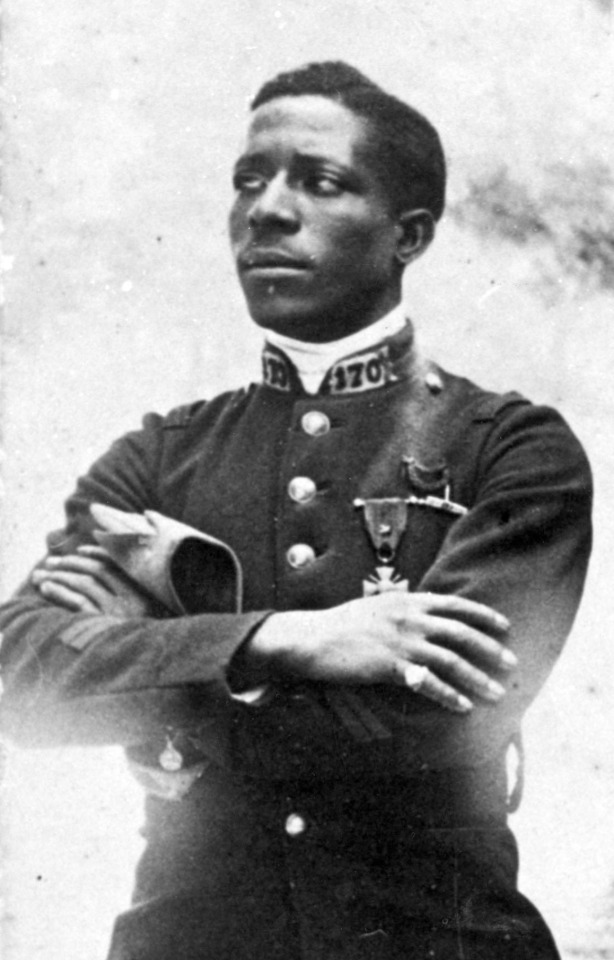
Eugene Bullard was one of the first African American military pilots in the world. Originally from Georgia, Bullard had run away from home when he was 11 and wondered around the state for six years with a clan of gypsies before stowing away on a German cargo ship in 1912. He ended up in Aberdeen, Scotland and eventually ended up in London, where he worked as a boxer and performer for an entertainment troupe. He traveled to Paris for a boxing match and eventually settled there permanently. When World War 1 began in 1914, Bullard joined the French Foreign Legion, where he saw combat at the Somme, Champaign, and Verdun. After being injured during the Battle of Verdun, he was sent to Lyon to recuperate. After recovering in 1916 he joined the French Air Service as a machine gunner. He obtained his pilot's license in 1917. He flew several missions during the war and claimed two victories over German planes. He applied to join the American Air Corps after the United States entered the war in 1917 but was rejected because of his race. Bullard returned to the French Air Service but was removed after an apparent conflict with a French officer. He remained in the military until 1919. He returned to Paris where he worked a nightclub, operated his own nightclub and gym, and married Marcelle de Straumann. After Germany invaded France in 1940, he volunteered to fight again, but was injured during the defense of Orleans. He escaped to Spain and later returned to the United States, settling in Harlem, New York City. In 1949, he was working as a security guard at concert hosted by Paul Robeson. Riots broke out where a racist mob and police officers beat concert goers, including Bullard. He eventually died of Stomach Cancer in 1961.
Bullard received many honors from France. In 1954, the French government invited Bullard to Paris to be one of the three men chosen to rekindle the everlasting flame at the Tomb of the Unkown Soldier under the Arc de Triomphe. In 1959, he was made a Knight of the National Order of the Legion of Honor. He also received the Military Medal, an award given for courageous acts and the third highest award in France. After his death, he also received honors from the United States. He was posthumously commissioned as a Second Lieutenant in the United States Air Force in 1994. He was inducted into the Georgia Aviation Hall of Fame in 1989 and the National Aviation Hall of Fame in 2022. The Museum of Aviation in Warner Robbins, Georgia erected a statute in honor of Bullard.
Ruby Bridges (1954 - )

Ruby Bridges hadn't even been born yet when, in 1954, the United States Supreme Court made a landmark ruling in the Board vs. Board of Education case that declared that desegregation in public schools was unconstitutional. This decision caused protests and celebrations all across the South, including New Orleans, Louisiana. In 1960, when Ruby was 6 years old, U.S. Circuit Court Judge ruled that schools in New Orleans must begin desegregation. Ruby was one of four 6-year-old girls (the others being Lenona Tate, Tessie Provost, and Gail Etienne) selected by the NAACP to participate in the integration. Tate, Provost, and Etienne enrolled at McDonogh 19 Elementary School, while Bridges enrolled at William Frantz Elementary School. All four faced death threats, racial slurs, and taunts. After a race riot broke out at Parish School Board meeting, U.S. Marshalls were called in to escort the girls to and from school.
Since the tumultuous period, Bridges has become a symbol of the Civil Rights Movement. She has been the subject of Songs, documentaries, movies, and 1964 Norman Rockwell painting "The Problem We All Live With". She is currently the Chair of the Ruby Bridges Foundation. She has also received numerous accolades over her life including the Presidential Citizens Medal by President Clinton in 2001, being honored as a "Hero Against Racism" by the Anti-Defamation League in 2006 and being inducted in the National Women's Hall of Fame in 2024.
Bessie Coleman (1892 - 1926)
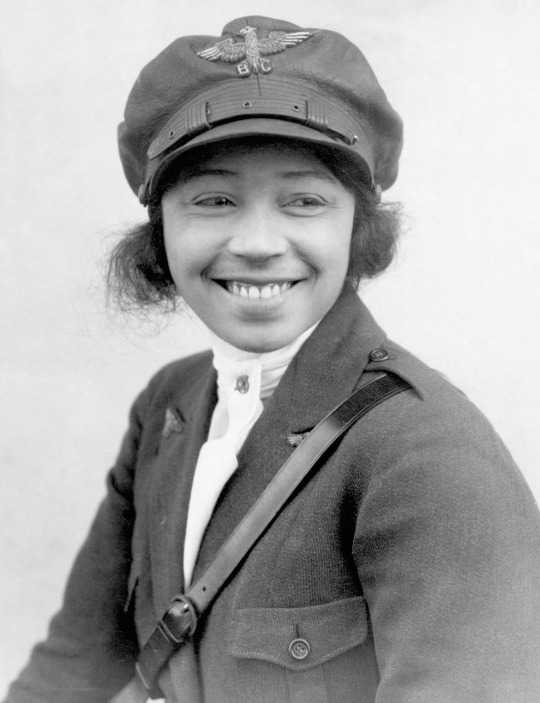
Bessie Coleman was born the tenth child out of thirteen to a family of sharecroppers in Texas. She walked four miles each day to attend a segregated school where she loved reading and established herself as an exceptional math student. Every harvest season she helped her family harvest cotton. When was turned eighteen years old, she enrolled at the Oklahoma Colored Agricultural and Normal University in Langston, Oklahoma (known today as Langston University). She only completed one term before running out of funds and returning home. In 1915, she moved to Chicago to live with brothers where she worked as a manicurist at a barbershop, where she heard flying stories of pilots returning from their service in World War 1. She took a second job as a restaurant manager to save money in the hopes of becoming a pilot herself, but flight schools in the U.S. at the time were not accepting women nor black people. As such, she was encouraged to study abroad by Robert Abbott, publisher of the African American newspaper 'The Chicago Defender'. To do this she received financial backing from the defender and banker Jesse Binga (founder of the first black owned bank in Chicago).
In 1920, she traveled to France to earn her license. She trained on a Nieuport 14 Biplane. In 1921, she received her pilots license, becoming the first black woman (and first black person in general) to receive a license from the Fédération Aéronautique Internationale. She returned to the United States in September becoming a media sensation. She made a living performing in air shows as a stunt flier. She met with community activists and spoke before crowds about perusing aviation as a profession and the goals of black people in the United States. Unfortunately, she was killed in 1926, when the plane she was flying in lost control and threw her out at 2,000ft. Though she never established her own flight school, her ambitions inspired many other black aviators to this very day.
Katherine Johnson (1918 - 2020)
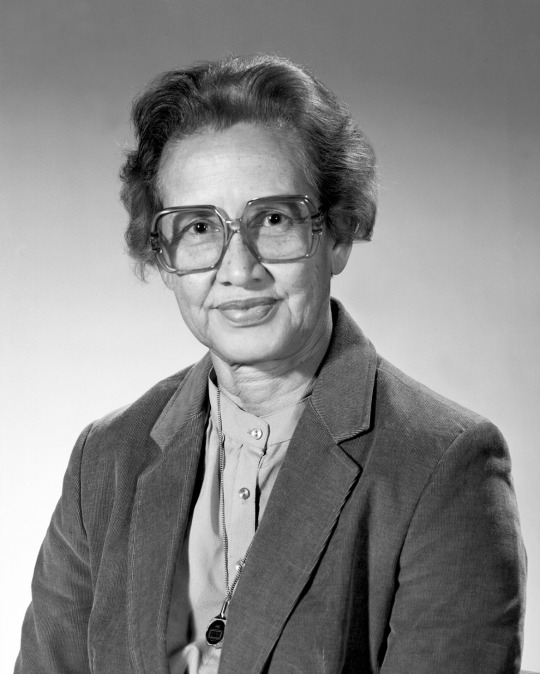
Katherine Johnson was one of the first black to be employed as a scientist at the National Aeronautics and Space Administration. Born in White Sulpher Springs, West Virginia, she was the youngest of four children. Her mother was a teacher, and her father was a lumberjack, farmer, and handyman. From an early age she displayed strong mathematical abilities, so her parents enrolled her in high school in Institute since their home county didn't school for African Americans passed the 8th grade. After graduating high school, she enrolled at West Virginia State College, where took every mathematics course offered (new classes were even added just for her). She graduated 'summa cum laude' in 1937 and took a teaching job Marion, Virginia.
In 1938, the Supreme Court ruled that states that provide higher education for white students must provide it for black students as well. As a result of this, Johnson was selected along with two men to become the first black students to be enrolled at the West Virginia University Graduate School in 1939. However, she left the program to start a family with her husband James Goble. The couple had three daughters: Joylette, Katherine, and Constance.
At a family gathering in 1952, a relative informed her that the National Advisory Committee for Aeronautics (NACA, the precursor to NASA) was hiring mathematicians and that the Langley Research Center was hiring Black applicants as well as white. Johnson took a job at the agency in 1953. She spent 33 years with NACA and NASA, where she earned a reputation as a human computer for mastering complex mathematical calculations and helping pioneer the use of electronic computers. She worked at topics including gust alleviation, flight trajectories, and launch windows. Her work was instrumental to the Apollo Missions during the Cold War 'Space Race'. For her work she was awarded the Presidential Medal of Freedom in 2015, the Silver Snoopy Award and a NASA Group Achievement Award in 2016, and the Congressional Gold Medal in 2019. She was the one of the subjects of the 2016 film Hidden Figures, and she was posthumously inducted into the National Womens Hall of Fame in 2021.
Shirley Chisholm (1924 - 2005)

Shirley Chisholm was the first black woman to be elected to the United States Congress. She was born in Brooklyn to working class parents. Since her mother face difficulty working and raising her children, Shirley and her three younger sisters were to live with their grandmother in Barbados. She said about her grandmother "Granny gave me strength, dignity, and love. I learned from an early age that I was somebody. I didn't need the black revolution to teach me that". She returned to the United States in 1934 and in 1939, began attending the integrated Girl's High School in Brooklyn. She did so well academically, she served as the Vice President of the Junior Arista Honor Society. She attended Brooklyn College where she majored in sociology and graduated in 1946. She married her husband Conrad in 1949. After suffering two miscarriages, the couple learned they could not have children. She worked as a teacher's aide from 1946 to 1953, during which she went on to obtain her master's degree in childhood education from Columbia University in 1951. She soon became an authority on childhood education and child welfare as a consultant for the Division of Day Care in New York City's Bureau of Child Welfare.
She entered politics when she joined the effort to elect Lewis Flagg Jr. to the bench as the first black judge in Brooklyn. The election group became known as the Bedford–Stuyvesant Political League (BSPL), which pushed candidates that supported civil rights and advocated for expanding opportunities in Brooklyn. After leaving the BSPL she worked with a number of different political groups including the League of Women Voters, the National Association for the Advancement of Colored People (NAACP), the Urban League, and the Democratic Party Club in Bedford-Stuyvesant, Brooklyn.
In 1964, Chisholm decided to run for the New York State Assembly after the present holder, Thomas R. Jones, was appointed to the New York City Civil Court. Despite resistance because she was a woman, she appealed to women voters and won the Democratic primary in June. She was elected in December serving in the assembly from 1965 to 1968, where she championed several pieces of legislation including expanding unemployment benefits and sponsoring the introduction of the SEEK program which helped disadvantaged kids enter college. In 1968 Chisholm ran for the United States House of Representatives for New Yorks 12th District, which had recently been redrawn to incorporate the Bedford-Stuyvesant neighborhood. She ran with the slogan "unbought and unbossed" and won the district with a nearly 2 to 1 margin over her opponent, becoming the first black woman ever elected to Congress. She served on a number of different committees during her career, including the Agriculture, Veterans, and Education and Labor Committees. She worked with Bob Dole to expand the Food Stamps program, played a critical role in the creation of the WIC program, and was a founding member of the Congressional Black Caucus and the National Women's Political Caucus. In 1972, she became the first black candidate for a major-party nomination for President of the United States and the first woman to run for the Democratic Party's presidential nomination, though she ultimately lost the nomination. She retired from politics in 1983, after 14 in Congress. She was posthumously awarded the Presidential Medal of Freedom in 2015.
Thurgood Marshall (1908 - 1993)

Thurgood Marshall was a lawyer and jurist who served as the black justice of the United States Supreme Court. Marshall was originally from Baltimore, Maryland, where graduated from high school with honors in 1925 and then attended Lincoln University in Pennsylvania where he graduated with honors in 1930 with a bachelor's degree in American literature and philosophy. While at Lincoln, he led the schools debate team to numerous victories. He attended Howard University Law School in Washington, D.C. because he couldn't attend the all-white University of Maryland Law School. While at Howard, he was mentored by NAACP first special counsel and Law School Dean George Hamilton Houston. He graduated first in class in 1933. He joined Houston as his assistant at the NAACP in 1935, where they worked together on the landmark case Missouri ex rel. Gaines vs. Canada, which ruled that any state which provides a school to white students had to provide in-state education to black students as well. After Houston returned to Washington, Marshall took over his position as special counsel to the NAACP and also became director-counsel of the NAACP Legal Defense and Educational Fund Inc.
During his career he argued 32 civil rights before the Supreme Court, winning 29 of them. Many of them were landmark cases including Smith vs. Allwright (which ruled that primary elections must be open to voters of all races), Morgan vs. Virginia (which ruled that a state law enforcing the segregation of interstate buses was unconstitutional), Shelley vs. Kramer (which ruled that racially restrictive housing covenants cannot be legally enforced), and Brown vs. Board of Education (which ruled that state laws requiring segregation in schools was unconstitutional).
In 1961, President John F. Kennedy appointed him as a judge on the United States Court of Appeals for the Second Circuit in order for Kennedy to demonstrate his commitment to the interests of black Americans. He took the oath after numerous delays by southern Senators. Marshall authored 98 majority opinions while on the bench. He was nominated as the United States Solicitor General by President Lyndon B. Johnson in 1965, where he won fourteen of the nineteen Supreme Court cases he argued. In 1967, Johnson nominated Marshall to be a Supreme Court Justice after Justice Tom C. Cark resigned. He took the Oath of Office on October 2. Marshall remained on the Court for 24 years until his retirement in 1991. A staunch liberal, he often dissented from the court as the liberal majority vanished and the court became more conservative. During his tenure he advocated for equal rights for minorities, opposed the death penalty, and supported abortion rights.
Jesse Owens (1913 - 1980)

Jesse Owens was an American track and field athlete who won four gold medals at the 1936 Summer Olympic Games. Owens was born the youngest of ten children in Oakville, Alabama. In 1922, his family moved to Ohio during the great migration in search of better opportunities. As a child, he developed a passion for running, which was encouraged by his middle school track coach Charles Riley. It was in middle school where he met Minnie Solomon. They married in 1935 and had three daughters: Gloria in 1932, Marlene in 1937, and Beverly in 1940. He first came to national attention while attending high school where he equaled the world record of 9.4 seconds in the 100 yards dash and long-jumped 24 feet 91⁄2 inches at the 1933 National High School Championship in Chicago. While a student at Ohio State University, Owens won a record eight NCAA championships. Notably in 1935, he set three world records and tied a fourth during the Big Ten Conference track meet in Ann Arbor. He equaled the world record of 9.4 seconds in the 100-yard dash and set records for the long jump at 26 feet 81⁄4 inches, the 220-yard sprint at 20.3 seconds, and the 220-yard low hurdles at 22.6 seconds, which cemented him in track and field history.
In 1936, in despite of his apprehension, he was selected to compete in the Summer Olympics in Berlin, Germany. At the time, Germany was under the iron grip of the Nazi regime led by Adolf Hitler. Hitler saw the games as an opportunity to promote the Nazi ideals of antisemitism and Aryan supremacy. He believed German athletes would dominate the games. However, he visions went unfulfilled. Over the length of competition Owens won Gold Medals in the 100-meter dash at 10.3 seconds, the long jump at 26 ft 5 inches, the 200-meter sprint at 20.7 seconds, and the 4 x 100-meter sprint relay at 39.8 seconds. On August 1, Hitler shook hands with the German victors only and left the stadium and then skipped all further medal presentations. Despite his victories, racial discrimination in the United States made it difficult for Owens to earn a living, being prohibited from appearing at sporting events and refused commercial sponsorships. He attempted several careers, but all they proved fruitless. He hit rock bottom in 1966, when he was prosecuted for tax evasion. In 1955, President Dwight D. Eisenhower selected Owens as a Goodwill Ambassador, being sent all around the world to promote physical exercise and tout American freedom and economic opportunity in the developing world, a position held until the 1970s. He also did product endorsement for corporations such as Quaker Oats, Sears and Roebuck, and Johnson & Johnson. He was invited to the 1972 Munich Summer Olympics as a guest of the West German government. He eventually retired and moved to Arizona with his wife. Owens succumbed to Lung Cancer in 1980 at the age of 66 and was buried in Tucson, Arizona. In 1983 he was inducted into the U.S. Olympic Hall of Fame and was posthumously a Congressional Gold Medal in 1990.
Hiram Revels (1827 - 1901)
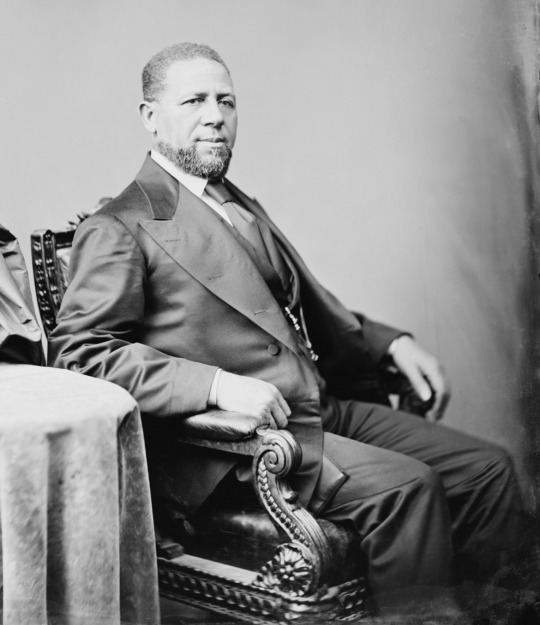
Hiram Revels was the first African-Amercian to serve in the United States Congress. He was born to free black people in Fayetteville, North Carolina. His father was a Baptist preacher. He attended a Quaker seminary in Indiana as a boy and in 1845, was ordained as a minister with the African Methodist Episcopal Church. He traveled throughout the Midwest preaching and acted as a religious teacher. He studied religion at Knox College in Illinois from 1855 to 1857 and then became a minister a Methodist Episcopal Church in Baltimore, Maryland, while also serving as a high school principal. During the Civil War, he enlisted as a Chaplain in the Union Army and helped recruit and organized two black regiments in Maryland and Missouri.
In 1866, Revels was called to be the pastor in Natchez, Mississippi where he settled permanently with his wife and five daughters. In 1868, during the Reconstruction Era, he was elected as an Alderman of Natchez and in 1869, he was elected to represent Adams County in the Mississippi State Legislature. In 1870, Revels was elected to the United States Senate by the state legislature to fill the seat left since before the Civil War. Southern Democrats opposed his seat, stating that the 1857 Dred Scott decision disqualified him on basis if citizenship. He officially became the first black senator on February 25. As a senator, he advocated compromise and moderation, and supported racial equality. He served on both the Committee of Education and Labor and the Committee of the District of Columbia (at the time, Congress administered the district). His professional conduct was greatly admired by fellow congressmen and the Northern press. After his term expired, he became President of Alcorn Agricultural and Mechanical College in Claiborne County, Mississippi (currently Alcorn State University). He served in this post until his retirement in 1882. In 2002, he was listed as one of 100 Greatest African Americans by Molefi Kete Asante.
Henry Johnson (1897 - 1929)
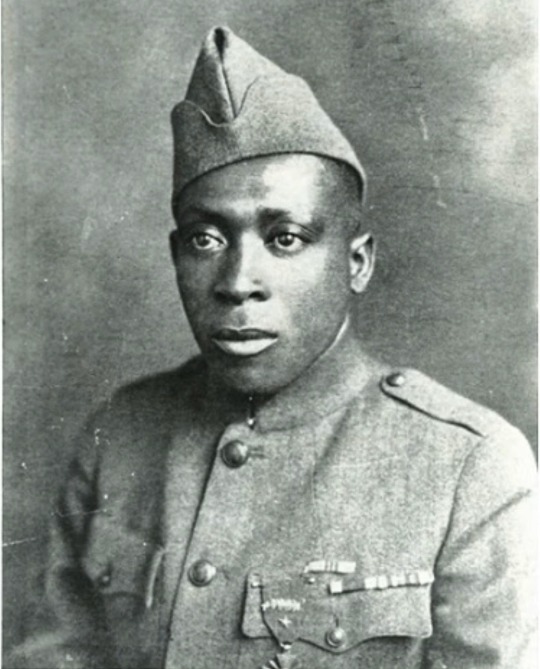
Henry Johnson was an American soldier who was noted for heroic actions during World War One. Originally from North Carolina, he moved to Albany, New York and worked variety of menial jobs before enlisting in the army in 1917, two months after the United States entry into the First World War. The unit he was assigned to, the all-black New York National Guard 15th Infantry Regiment, was mustered into federal service and redesignated as the 369th Infantry Regiment, commonly known as the Harlem Hellfighters. The regiment was assigned to labor service duties while stationed in Europe. The black service members faced discrimination and harassment by white soldiers and even the American headquarters. The American commander loaned the regiment to the French Army. It's believed he did this because white soldiers refused to fight alongside black soldiers. The French enthusiastically welcomed the new troops.
The regiment, Johnson included, was assigned to the Ardennes Forest. While on outpost duty on the night of May 14, 1918, Johnson came under attack by a German raiding party. Using only his bare hands, a bolo knife, his rifle butt, and some grenades, he was able to repel the attackers, killing four of them and preventing the capture of his fellow soldiers, all while suffering 21 wounds. He was given the nickname "Black Death" for his actions and awarded the Croix de guerre by France. However, his actions went unrecognized in the U.S. because of racial discrimination, and he died poor and in obscurity. However, he has since been posthumously given several awards by the military, including the Purple Heart in 1996, the Distinguished Service Cross in 2002, and the Medal of Honor in 2015. In 2023, the U.S. Army base Fort Polk in Louisiana was renamed Fort Johnson in his honor.
Dorothy Height (1912 - 2010)
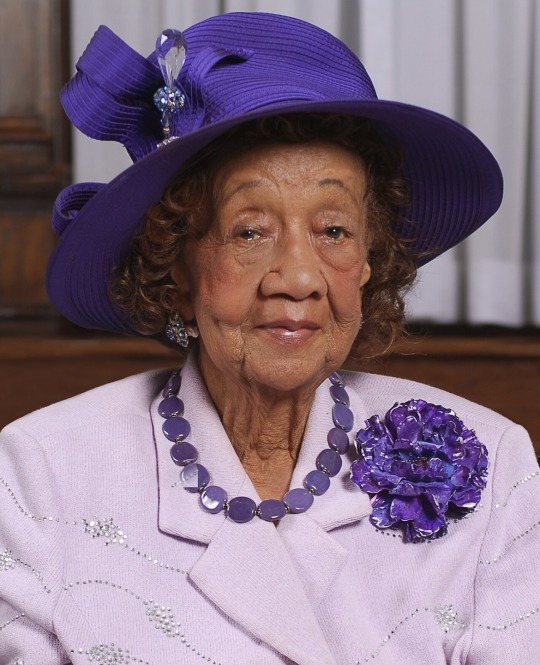
Dorothy Height was an activist for both the Civil Rights and Women's Rights movements. Height was born in Richmond, Virginia and moved to Rankin, Pennsylvania when she was five. Her mother was active in the Pennsylvania Federation of Colored Women's Clubs, and regularly took along Dororthy to meetings, which exposed her to activism from a young age. Height was an enthusiastic participate in Young Women's Christian Association, who was eventually elected as president of the club. She was appalled to learn that her race prevented her from using the YMWA's central branch swimming pool and dedicated much energy to changing the YWCA. While in high school she was active in the anti-lynching movement and won first place and a $1,000 scholarship in a national oratory contest held by the Elks Club. Height graduated from high school in 1929 and was accepted entry in Bernard College at Columbia University but was barred from entering because the school had an unwritten policy of only admitting two black students a year. She instead enrolled at New York University and graduated with a bachelor's degree in 1932 and a master's degree in educational psychology in 1933. She pursued postgraduate work at the New York School of Social Work.
From 1934 to 1937, Height worked for the New York Department of Welfare, a job she credited for teaching her conflict resolution skills. She then took a job as a counselor at the YWCA Harlem Branch. While working there she met civil rights activist Mary McLeod Bethune and First Lady Eleanor Roosevelt at a meeting of the National Council of Negro Women being held at the YWCA office. During this meeting Bethune told her "The freedom gates are half ajar. We must pry them fully open". She dedicated her life to this cause. She also did work with the United Christian Youth Movement, a group that worked to relate faith to real-world problems.
Beginning in 1939, she worked at YWCA offices in New York City and Washington, D.C., specializing in interracial relations. She ran trainings, wrote periodicals, and worked in Public Affairs on race issues. She believed that segregation caused prejudice through estrangement, so after the YWCA adopted in interracial charter in 1946, Height worked to help white members of the organization transcend their apprehension and bring their action in line with what the YWCA principles by running workshops, facilitating meetings, and writing articles. In 1958, she was elected president of the National Council of Negro Women and remained at the post until 1990. While president of the NCNW, she worked alongside civil rights leaders such as Martin Luther King Jr., John Lewis, and Whitney Young. Thanks to her background as an orator, she became a master at acting as the middleman in initiating dialogue between feuding parties. In 1963 she became head of the "Action Program for Integration and Desegregation of Community YWCAs", which was started in response to the growing civil rights movement. In this role she worked to monitor progress in integrating the association. In 1974, she was named to the National Commission for the Protection of Human Subjects of Biomedical and Behavioral Research, which was formed in response to the Tuskegee Syphilis Experiment scandal. She was also a driving force behind the movement to get a statue of Mary McLeod Bethune in Lincoln Park, the first statue of a woman or a black person to be erected on federal land.
She was inducted into the National Women's Hall of Fame in 1993. She was awarded the Presidential Citizen's Medal in 1989, the Presidential Medal of Freedom by President Bill Clinton in 1994, a Congressional Gold Medal by President George H.W. Bush in 2004, and President Barack Obama called Height "the godmother of the civil rights movement and a hero to so many Americans". She died on April 20, 2010, at the age of 98. She was buried at Fort Lincoln Cemetery in Maryland after a funeral at the National Cathedral in Washington D.C. She is considered one of the driving forces of the American Civil Rights Movement.
10 notes
·
View notes
Text

Valkyrie- she is so gorgeous! 54 years ago February 4th 1969 was her last flight. She took off from Edwards Air Force Base,CA and flew to the National Airport Museum in Dayton Ohio for her retirement. Over the next few days I'll be posting a lot more about her. Out of, all the aircraft in history that I've studied. From the Wright flyer to the F-35, J20, Su 57 and of course the one that is the most badass ass of all thee F-22 Raptor! The Xb70 valkyrie has been my favorite I started actively researching aircraft at the age of six, 1974. I would dream daily of seeing her. As of yet I've never seen her in person. That all changes in about 2 months, I'll be seeing her for the first time in her new birth and I am very excited. I've been by the museum three times, but I was only on the East Coast for family emergencies! I grew up and have lived my life on the west coast, in Seattle! Being an aviation historian, has been a fun lifelong Pursuit, full of passion! Valkyrie is truly the most beautiful aircraft I've ever laid eyes on!
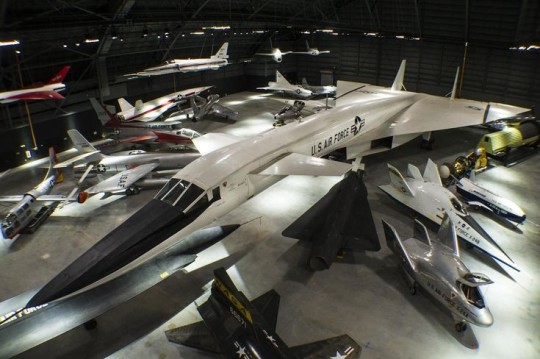








#wingnutz360#aircraft#aviation history#warbirds#avgeek#aviation lovers#military aviation#aviation news and photos with david arkwright#ww 2#f14 tomcat#xb70valkryie#xplane#usaf#USAFMUSEUM#nasa picture of the day#80000 FT MACH 3
123 notes
·
View notes
Text
checked quotev, so mass update:








Update of the past week
•Today Russia launched mass attacks across Ukraine killing at least 41 and injuring over 170 (many still under rubble), children and animals died as well; Russia targeted Ukraine's largest children's hospital and a maternity hospital
•Ukrainian forces withdraw from eastern Chasiv Yar neighborhood
•Russia’s and China’s relations at ‘best in history’; Xi indicated his support for Russia in it’s full-scale invasion of Ukraine
•97% of Russian missiles, drones, and bombs hit civilian infrastructure (with only 3% hitting military targets)
•120,000 Russian occupiers killed in Ukraine -Meduza, Mediazona
•34% of Russians believe a nuclear strike against Ukraine would be justified
•14 Ukrainian brigades lack supplies as aid arrives slowly
•Yesterday 33 were killed as a result of Russia’s attack on Ukraine’s largest children’s hospital, maternity hospital, and other civilian structures. 32,000 people (2,200 children) sought refuge in metro stations in Kyiv
Day 867
•45 killed (including children), over 200 injured (including children) in Russian attacks against Ukraine (figures include yesterday’s attacks as well)
•US obtained intelligence on possible Russian-linked sabotage plots in Europe
•Ukraine will be represented at the Olympics by the smallest number of athletes ever 140) as sports facilities and training is interrupted by Russian missiles and air raids
•Ukrainian forces attacked Russian airbase, oil depot, and Russia’s energy facility overnight
Day 868
•8 killed, 24 injured in Russian attacks against Ukraine
•Ukrainians raised nearly $7M in 1 day to restore Kyiv children’s hospital after Russia destroyed it
•During US elections, Russia aims to undermine support for Ukraine
•Ukraine can use British Storm Shadow missiles to hit targets in Russia for defense purposes
•Russia lacks the troops and ammunition for a major offensive in Ukraine - NATO official
Day 869
•5 killed, 14 injured in Russian attacks against Ukraine
•Thousands of Ukrainians living in Poland have voluntarily joined a Ukrainian Legion being trained in Poland
•Ukrainian forces halted Russian advance to Borova village, Kharkiv oblast;
•Indian state refiners discuss long-term oil import deal with Russia
•US and Germany stopped Russian plot to assassinate CEO of weapons manufacturer
personal update from her:
Just to let everyone know, I’ll be in Ukraine until the 25th of July, (bringing over humanitarian aid, visiting friends, etc) that will cause the times I post to be significantly earlier and likely shorter (as it’s earlier in the day, not all updates for the day will be in yet). There are only a few hours of electricity a day but I will do my best to keep posting if able. Please continue supporting Ukraine through staying informed, reposting, donating if able (u24.gov.ua/), and your prayers are very much appreciated. Stay healthy, stay safe, and God bless everyone
-Ukraina
Day 870
•7 killed, 46 injured (children) in Russian attacks against Ukraine
•Russian pilot (shocked by Russia’s attack on Kyiv children’s hospital) leaked confidential data on Russian aviation division to Ukraine
•Russia plans to block YouTube this fall -Russian media
•Chinese and Belarusian militaries conduct joint drills near NATO and Ukraine borders
•GPS jamming in Finland likely part of Russian hybrid campaign -ISW
•UN demands Russia withdraw from occupied Zaporizhzhia nuclear power plant
Day 871
•12 killed (chief emergency worker), 34 injured in Russian attacks against Ukraine
•In the past 6 months at least 10,014 Russian soldiers have been killed fighting in Ukraine
•Russian kamikaze attack drone flies deep into Belarus, whereabouts unknown
•National Bank sets new historic low for Ukrainian hryvnia exchange rate ($1 = 41.04hrn)
•Ukrainian drones strike Russian oil depot overnight
Day 872
•15 killed, 75 injured in Russian attacks against Ukraine
•China and Russia begin joint military drills
•Russia falsely accusing Ukraine of involvement in attempted assassination of Donald Trump
•Russia often fails to evacuate injured soldiers, uses them and POWs in human wave attacks
Russian forces are sending injured soldiers back to the front and using Ukrainian prisoners of war (POWs) as shields in "human wave" attacks. -The Telegraph Human wave assaults are frontal attacks launched by infantry units without armored vehicles or other defensive shields. Russia has deployed such attacks in its full-scale war against Ukraine, notably in the battle to capture Avdiivka in Donetsk Oblast -The Kyiv Independent
3 notes
·
View notes
Text
While The Wright Brothers Toiled, Cincinnati’s Flying Machine Fanatics Tanked
Ohio license plates proclaim the Buckeye State as the “Birthplace of Aviation.” Had fate turned out differently, that sobriquet could have applied to Cincinnati. Over the years, several Cincinnati tinkerers tried unsuccessfully to loft a heavier-than-air craft.
As far back as 1834, a Cincinnati resident named Albert Masson constructed a vehicle he described as an “aerial steam boat.” According to a writer signed only as “J.L.” (possibly John Laughlin, secretary of the Ohio Mechanics Institute), in the Liberty Hall and Cincinnati Gazette newspaper [3 July 1834]:
“The boat is about ten feet long; the ribs being covered in silk, in order to render it very light. – The engine, of two horse power, is placed in the middle, and turns four vertical shafts projecting over the bow and stern, into each of which are fixed 4 spiral silken wings, which are made to revolve with a sufficient velocity to cause the vessel to rise.”
According to “J.L.”, the entire apparatus weighed about 60 pounds and Mr. Masson intended to fly the contraption on July 4 – the very next day. At the time of publication, the aerial steam boat was on display “on Race street, nearly opposite the old Lath Factory, below Third street.”
Mr. Masson did not go airborne on Independence Day and, in August, his flying machine was on earthbound display at the Commercial Exchange. The Daily Cincinnati Republican reported, “There is nothing of the balloon principle connected to the apparatus.” and that it was “a beautiful and ingenious piece of mechanism.”
As beautiful and ingenious as it was, the aerial steam boat appears not to have ever achieved flight and all references to it cease after 1834. Tom D. Crouch, curator of aeronautics at the National Air and Space Museum and a former chief of education for the Ohio Historical Society, has researched Masson’s invention extensively, publishing his findings in the Journal of the American Aviation Historical Society [Spring 1974]. According to Mr. Crouch:
“If we are to believe the articles published in the Cincinnati papers, and there seems no reason to doubt them, then Albert Masson was the first person in history to produce a heavier-than-air craft, powered by a prime mover, that was actually intended to fly.”
Although Mr. Masson vanished into the mists of history, between 1840 and 1902, Cincinnati newspapers printed at least 404 articles with the phrase "flying machine." Some of these reports featured home-grown Cincinnati aeronauts.

Cincinnatians awoke on 27 Oct 1889 to learn that a local man, one Ferdinand W. Randall of Main Street, had built a flying machine. In fact, this inventor had quite a surprise for the scientific community. As related by the Cincinnati Enquirer:
"He not only has a flying machine, but claims to have discovered perpetual motion."
The newspaper goes on to relate that Mr. Randall's inventions have "something lacking." That "something" was, of course, money.
Mr. Randall, approximately 35 years in age at the time, was a photographer. His workshop was on Main Street. His flying machine was described as a "peculiar-looking sail-boat" suspended by a wire from the ceiling. It was basically a boat hull, with a screw propeller and rudder at the rear, four wheels and an "intricate mass of fans and wire cables." Two black wings, wider and longer than the boat, were suspended above. According to the Enquirer,
"The beauty about Mr. Randall's machine is that it can move on land, in the water, or in the air."
Randall told the Enquirer he had read every book available on aeronautics and is "undoubtedly well posted on the subject." Well posted or not, Mr. Randall joined the roster of inventors whose aircraft never left the ground.
Curiously, just 18 months later, the Cincinnati newspapers found yet another potential flying machine. This one was created by a mechanic named John Randall, of 322 Vine Street, who had built a flying machine remarkably similar to the airship unveiled by Ferdinand Randall - a boat 18 feet long with a mass of wires attached.
Similar flying machines and identical names? Not a coincidence. The Randalls were brothers who had operated Randall Brothers Outdoor Photographers for several years. The younger brother struck out on his own and got work as a mechanic and electrician.
Ferdinand apparently gave the flying machine to his brother because the machine described in 1891 is almost identical to the 1889 machine with one exception. John replaced the two black wings atop Ferdinand’s machine with a large canvas balloon. In other words, it was no longer a heavier-than-air machine, but only a mechanically propelled lighter-than-air craft. Not the same thing at all.
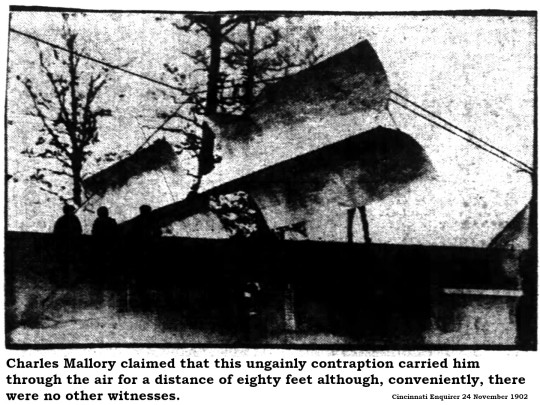
Had another local man succeeded, Kennedy Heights or Norwood might be known as the birthplace of manned flight. Alas, Charles M. Mallory did not succeed. In fact, he failed again and again and again. Sometimes spectacularly.
In August 1902, the 40-year-old Mallory, a pattern maker with the Bullock Electric Manufacturing Company, announced that he would launch a new flying machine into the air from a vacant lot in Kennedy Heights. With a large crowd observing, he rolled out a contraption described by the Cincinnati Enquirer:
"It was as if two monster Mexican hats had been inverted and joined together by a framework that had wings on either side. At one end was a rudder."
With a squad of volunteers tugging away, Mallory's monstrosity "scudded along the scaffolding for a few feet and then toppled over on one side."
Mallory tried again in November 1902 at the grounds of the old Norwood Inn. This time, instead of human volunteers, Colonel James E. Fennessy, a local theatrical impresario, volunteered to tow the contraption aloft with his automobile. Col. Fennessy got bored waiting for Mallory to prepare his flying machine and drove home. Fennessy sent a chauffeur out to Norwood with another automobile, but he, too, lost patience.
When Mallory was finally ready, no automobiles could be found, despite messengers and phone calls. While waiting in vain for another runabout, Mallory agreed to pose for photographs in his machine, hoisted to the top of a derrick. The wind caught the contraption and dashed it to the ground from a height of 25 feet. Although Mallory was unhurt, his flying machine was in tatters.
Mallory attempted another flight in August 1903 off Lookout Mountain in Tennessee but, again, the wind dashed his contraction to flinders. Interestingly, Mallory told the Cincinnati Post at that time that he had achieved an 80-foot flight in Norwood, a feat suspiciously unseen by any other witness.
Four months later, the Wright boys grabbed the prize.
3 notes
·
View notes
Text
Elon Musk's father was a progressive in local government in South Africa during the apartheid era. Elon is estranged from his father and left South Africa when black majority rule appeared on the horizon.
Elon seems to take after his mother's side of the family.
This month, Elon Musk threatened to sue the Anti-Defamation League, alleging that its denunciation of X—the A.D.L. had accused the social-media platform formerly known as Twitter of amplifying antisemitism—has cost Musk’s company a fortune in advertising revenue. The Anti-Defamation League, in turn, asserted that Musk’s threat was “dangerous and deeply irresponsible.” [ ... ] Musk’s family history has a bearing on the dispute, but, in the book, as I pointed out in a review, Isaacson only glancingly discusses Musk’s grandfather J. N. Haldeman, whom he presents as a risk-taking adventurer and whose politics he dismisses as “quirky.” In fact, Haldeman was a pro-apartheid, antisemitic conspiracy theorist who blamed much of what bothered him about the world on Jewish financiers. Elon Musk is not responsible for the political opinions of his grandfather, who died when Musk was three years old. But Haldeman’s legacy casts light on what social media does: the reason that most people don’t know about Musk’s grandfather’s political writings is that in his lifetime social media did not exist, and the writings of people like him were not, therefore, amplified by it. Indeed, they were very unlikely to circulate widely, and are now quite rare. Still, they’re not hard to find, which makes it unfortunate that Isaacson neither quotes from nor mentions them. Musk has said that he bought Twitter to halt the advance of a “woke mind virus” spreading online. His grandfather wrote his tracts to raise an alarm about what he called “mind control,” on the radio and television, where “an unconditional propaganda warfare is carried on against the White man.” Haldeman was born in Minnesota in 1902 but grew up mostly in Saskatchewan, Canada. A daredevil aviator and sometime cowboy, he also trained and worked as a chiropractor. In the nineteen-thirties, he joined the quasi-fascistic Technocracy movement, whose proponents believed that scientists and engineers, rather than the people, should rule. He became a leader of the movement in Canada, and, when it was briefly outlawed, he was jailed, after which he became the national chairman of what was then a notoriously antisemitic party called Social Credit. In the nineteen-forties, he ran for office under its banner, and lost. In 1950, two years after South Africa instituted apartheid, he moved his family to Pretoria, where he became an impassioned defender of the regime.
As historian Jill Lapore (author of that New Yorker article) mentioned, Elon Musk is not responsible for J. N. Haldeman's opinions. But it's curious that both Elon and J.N. have been fishing in similar waters.
Social Credit has roots that aligned it to fascism. Though after World War II the Canadian Social Credit Party's message became more diluted and it drifted towards libertarianism; it had seats in Canada's parliament as late as 1980.
Like the bulk of Silicon Valley entrepreneurs, Musk embraced libertarianism – gladly using the copious infrastructure and research paid for by government funds while claiming to have created wealth without getting help from anybody else.
We don't inherit political views or ideologies the same way as DNA. But pervading mindsets in a family can persist with some members of that family for several generations.
Twitter/X is increasingly a cesspool of hate speech. J. N. Haldeman probably would have approved.
#elon musk#twitter#x#social media#j.n. haldeman#technocracy#fascism#social credit#libertarianism#antisemitism#adl#hate speech#leave twitter#delete twitter#quit twitter
8 notes
·
View notes
Note
I wanna read your ramble about planes more
And I couldn't be any happier to share with you, especially on today, National Aviation Day! ☺️
I'll talk about a real cool and gorgeous plane I saw last month, but first let me tell you about its kind.
The P-51 Mustang was the hotrod fighter of WWII, and easily the most famous fighter of WWII. It was designed and built in just 100 days, and was revolutionary as it was the first aircraft to successfully be designed with a laminar flow wing.
There were a handful a Mustang variations, but here are the most common. The most notable differences are their canopies. A-C had what is called a "birdcage" or "razorback" canopy while the D model had a "bubble" canopy that provided a 360° view (note: The P-51C could also have the Malcom Hood and the P-51B could also have a birdcage canopy)

There is an odd looking bump on the belly of the Mustang that is a cooling scoop for the radiator and oil. While aerodynamically it looks like it causes more drag, which it does, it actually takes advantage of a cool effect called the "Meredith effect." Due to the fact that the hot radiator is inside of the scoop, there is actually a backdoor on the scoop that blows out the hot and pressurized waste air.
This pressurized air being blown out is actually producing thrust, like a jet engine and more specifically a ramjet, and for the Mustang it produces about 300 lbs of thrust. So the "Meredith effect" is that despite the scoop itself producing more drag on the airframe, the thrust being produced nearly equalizes the effect of the drag and offsets it.

Okay, now onto one of the most beautiful planes I have had the pleasure of seeing. This is a P-51C named "Thunderbird" that has quite the history.

Hollywood actor and WWII bomber pilot Jimmy Stewart owned this plane after the war ended. "Thunderbird" never saw service in WWII as it was a surplus aircraft and instead was bought and used as a race plane. It won the 1949 Bendix race trophy and had an average speed of 470 mph, which was record setting at the time. Due to the paint on the plane and how polished it was, it actually gained 8 mph in flight.

In late 1949 famous WASP pilot, and leader, and one of the most well known women aviators and record setters named Jackie Cochran bought "Thunderbird" where she set more world records in it. She eventually sold it back to Jimmy Stewart before it was passed onto more owners.

The aircraft was involved with a crash in 1955 and began part recovery for restoration in 1999. In 2007 the restoration of this aircraft began and was finished in mid 2023. In early June it had its first post restoration flight. It is painted in 100% original colors and has the same designs it wore when it won the Bendix trophy. It had been painted less than one week prior to when I saw it, so it was a very clean and neat Mustang!

A neat fact about this aircraft was that after Queen Elizabeth II was coronated it was used to fly the coronation tapes for CBS from Newfoundland into the United States as it was trusted for its speed to complete the job
Alright, (long) ramble over. Thanks for letting me share!
#unless there was anything specific about planes/aviation in general you wanted me to ramble about- just let me know!#I have seen all of the Mustangs pictured in person (besides the A model ''Miss Virginia''). The D model ''Gunfighter'' is based in Iowa! 😊#I absolutely love talking about aviation. I will probably be talking a little more about planes here soon-#since I'm about to start school in a day for aviation maintenance!#ask#anon#aviation
7 notes
·
View notes
Text
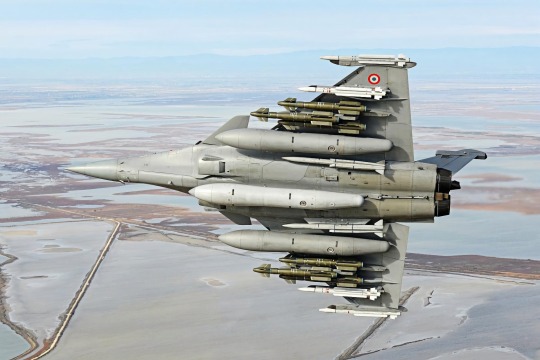
France will deliver missiles to Ukraine on a monthly basis in 2024
More than 600 missiles announced as continuous support in the midst of Ukraine's struggles.
Fernando Valduga By Fernando Valduga 01/19/2024 - 16:00 in Military, War Zones
France has committed to provide Ukraine with 50 missiles per month over 2024, totaling 600 missiles throughout the year, as the war-torn nation continues to face the effects of the conflict.
The French Minister of Defense, Sebastien Lecornu, announced the start of missile deliveries to Ukraine during an interview at France Inter, reports Le Figaro. From January 18, France will provide approximately 50 undesignated "missiles" per month by the end of the year.
Lecornu clarified that this is a distinct initiative from President Emmanuel Macron's decision to supply about 40 SCALP air-to-air cruise missiles to Ukraine.

The missile weapons supplied are believed to be modified air bombs of the AASM family, equipped with a propellant rocket and classified as missiles in the French military system. AASM is a modernization kit designed for existing free-fall unguided aerial pumps, specifically the American JDAM model used by Ukrainian tactical aviation.
The AASM kit includes a front section with orientation system and flaps and a rear section with accelerator to increase flight range. Two types of aerial pump kits are in use in France: "Hammer-250" for 227 kg Mk82 pumps and "Hammer-1000" for 908 kg Mk84 pumps.

The front part of the AASM kit can incorporate three orientation systems: inertial with GPS correction, inertial with thermal imaging orientation or similar with laser beam orientation system. In 2016, the French Ministry of Defense ordered the production of 764 AASM sets with inertial orientation system, 384 sets with thermal imaging orientation and 600 sets with laser orientation.
The range of these ammunition varies according to the launch height and the initial speed, officially ranging from 15 to 70 kilometers. With the expected start of ammunition transfers in January, it is expected that Ukrainian aircraft, especially Soviet-era models, such as the MiG-29 and Su-27 fighters, will be the main users of Mk.82 air bombs. The heavier Mk.84 pumps, weighing 908 kg, are only compatible with the Su-24M frontline bomber.

In addition, the AASM ammunition demonstrated compatibility with F-16 fighters during the tests in 2014. Ukraine is expected to receive its first F-16 fighters this year.
Tags: AASMMilitary AviationWar Zones - Russia/Ukraine
Sharing
tweet
Fernando Valduga
Fernando Valduga
Aviation photographer and pilot since 1992, he has participated in several events and air operations, such as Cruzex, AirVenture, Dayton Airshow and FIDAE. He has works published in specialized aviation magazines in Brazil and abroad. He uses Canon equipment during his photographic work in the world of aviation.
Related news
The F-35's ALIS system should soon be replaced by a new cloud-based platform.
INCIDENTS
Stray flashlight sucked by F-35 engine caused $4 million in damage
19/01/2024 - 20:18
MILITARY
DragonFire laser weapon system successfully tested against aerial targets
19/01/2024 - 14:00
MILITARY
'Storted' camouflage is patented by the UAC for Su-75 Checkmate
19/01/2024 - 09:00
BRAZILIAN AIR FORCE
Saab puts F-39 Gripen in air combat with F-5 for IRST tests
19/01/2024 - 08:14
MILITARY
Houthis want to threaten the US with a single jet fighter, an old F-5
18/01/2024 - 22:52
MILITARY
USAF confirms that B-21 Raider started test flights at Edwards Air Base
18/01/2024 - 21:52
homeMain PageEditorialsINFORMATIONeventsCooperateSpecialitiesadvertiseabout
Cavok Brazil - Digital Tchê Web Creation
Commercial
Executive
Helicopters
HISTORY
Military
Brazilian Air Force
Space
Specialities
Cavok Brazil - Digital Tchê Web Creation
14 notes
·
View notes